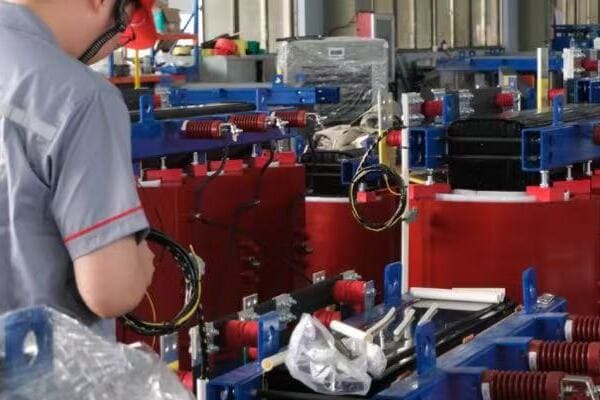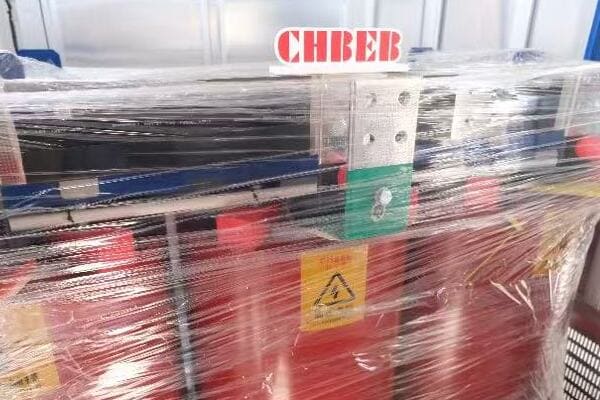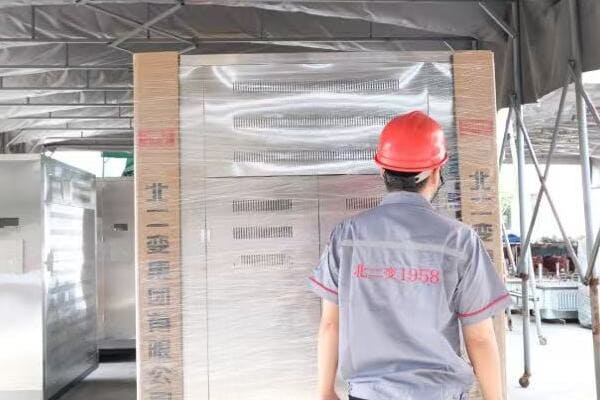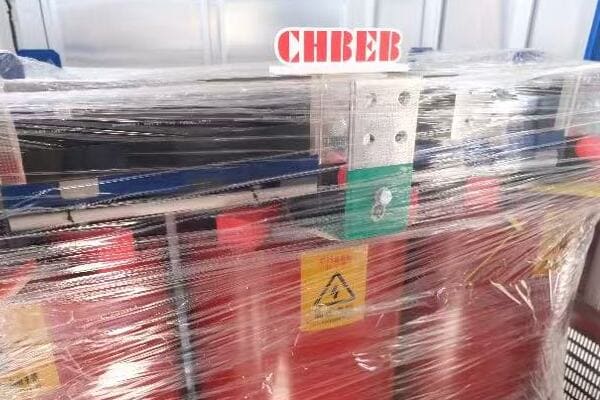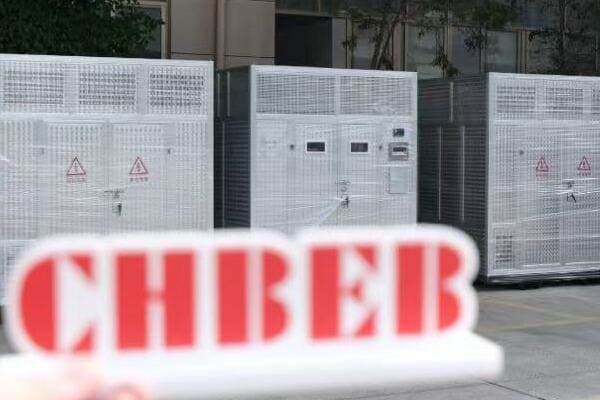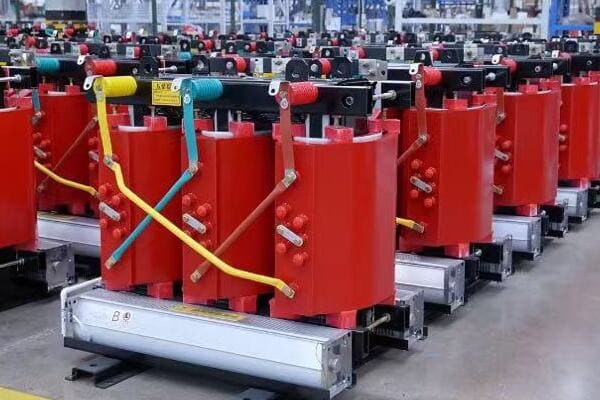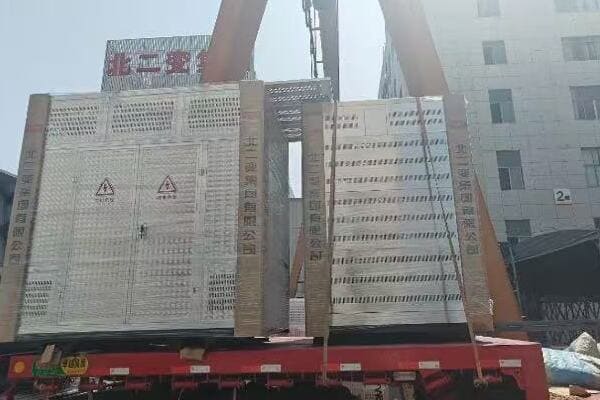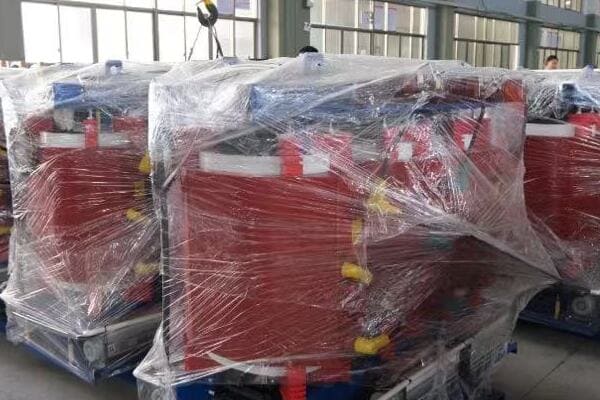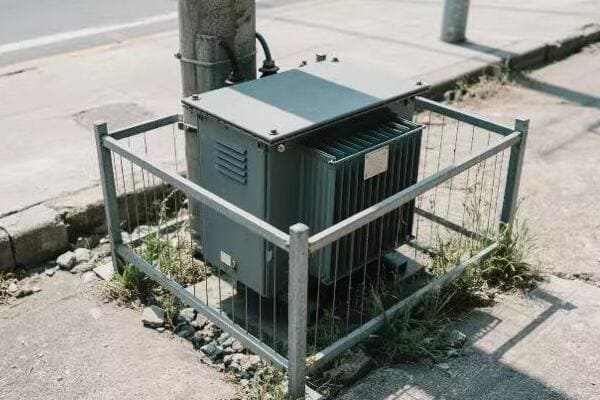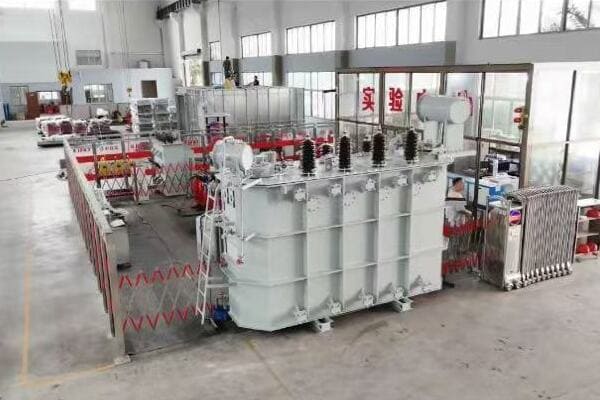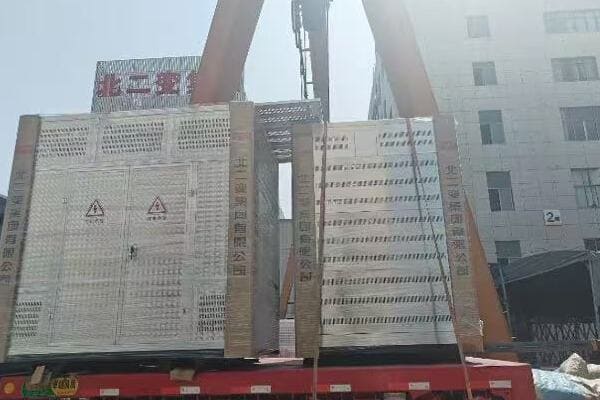Are you struggling to choose the right dry type transformer manufacturer? You’re not alone. Many buyers find this process overwhelming and confusing.
Selecting the right dry type transformer manufacturer involves evaluating their product range, manufacturing capabilities, quality control processes, technical expertise, and after-sales support. It’s crucial to match the transformer specifications with your specific application needs and consider long-term partnership potential.
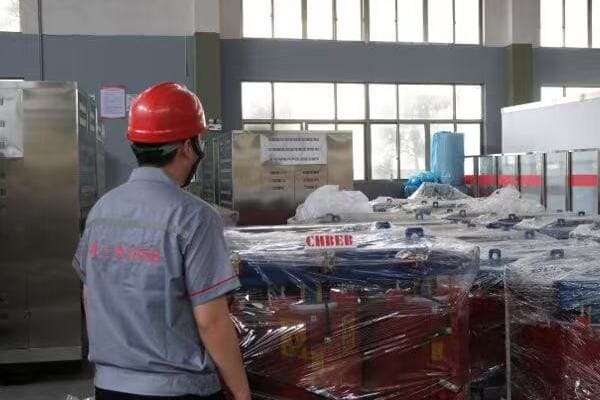
In my years of experience in the power industry, I’ve learned that choosing the right manufacturer is as important as selecting the right transformer. Let’s dive into the key aspects you need to consider to make an informed decision.
Understanding Dry Type Transformer Categories: A Comprehensive Overview?
Are you confused by the various types of dry type transformers available in the market? You’re not alone. Many buyers struggle to understand the differences and their implications.
Dry type transformers come in several categories, including cast resin, vacuum pressure impregnated (VPI), and open-wound types. Each type has its own advantages and is suited for specific applications, from indoor installations to harsh outdoor environments.

Let me break down the main categories of dry type transformers based on my experience in the field:
Cast Resin Transformers: The Robust Workhorses
Cast resin transformers are known for their durability and reliability:
-
Construction:
- Windings are encapsulated in epoxy resin
- Provides excellent protection against moisture and contaminants
- I once installed a cast resin transformer in a coastal industrial plant. After five years, it showed no signs of degradation despite the harsh, salty environment.
-
Applications:
- Ideal for indoor installations where fire safety is crucial
- Commonly used in high-rise buildings, hospitals, and offshore platforms
- In a recent project for a data center, we chose cast resin transformers for their fire-resistant properties and low maintenance needs.
-
Advantages:
- High short-circuit strength
- Excellent fire resistance
- Low noise levels
Vacuum Pressure Impregnated (VPI) Transformers: The Efficient Performers
VPI transformers offer a balance of performance and cost-effectiveness:
-
Construction:
- Windings are vacuum impregnated with varnish or resin
- Provides good protection against environmental factors
- I’ve seen VPI transformers perform exceptionally well in moderate industrial environments.
-
Applications:
- Suitable for both indoor and outdoor installations
- Often used in industrial plants and renewable energy projects
- We recently used VPI transformers in a solar farm project, where their efficiency and cost-effectiveness were key factors.
-
Advantages:
- Good thermal performance
- Lower cost compared to cast resin types
- Lighter weight, making installation easier
Open-Wound Transformers: The Basic Workhorses
Open-wound transformers are the simplest in design:
-
Construction:
- Windings are not encapsulated
- Rely on air circulation for cooling
- In my early career, I worked extensively with open-wound transformers in small industrial applications.
-
Applications:
- Best suited for clean, dry environments
- Often used in small commercial and light industrial settings
- I’ve installed these in many small workshops and retail spaces where budget was a primary concern.
-
Advantages:
- Most cost-effective option
- Easy to inspect and maintain
- Good for applications with lower power requirements
Comparison Table: Dry Type Transformer Categories
| Feature | Cast Resin | VPI | Open-Wound |
|---|---|---|---|
| Environmental Protection | Excellent | Good | Fair |
| Fire Resistance | High | Moderate | Low |
| Cost | Highest | Moderate | Lowest |
| Typical Applications | Critical installations | Industrial, Renewable Energy | Small commercial |
| Maintenance Needs | Low | Moderate | High |
| Weight | Heaviest | Moderate | Lightest |
In my experience, understanding these categories is crucial for making the right choice. For instance, in a recent project for a chemical plant, we initially considered VPI transformers for cost reasons. However, after assessing the corrosive environment, we opted for cast resin transformers. The higher upfront cost was justified by the increased durability and reduced maintenance needs in the long run.
Remember, the right type of dry transformer depends on your specific application, environment, and budget constraints. Don’t hesitate to consult with manufacturers about your unique needs – a good supplier will guide you towards the most suitable option.
Key Factors in Evaluating Dry Type Transformer Manufacturers and Their Capabilities?
Are you wondering how to differentiate between various dry type transformer manufacturers? It’s a common challenge many buyers face, and the choice can significantly impact your project’s success.
Evaluating dry type transformer manufacturers involves assessing their production capabilities, quality control processes, technical expertise, and industry reputation. Key factors include manufacturing facilities, certifications, R&D investments, and track record of successful projects.
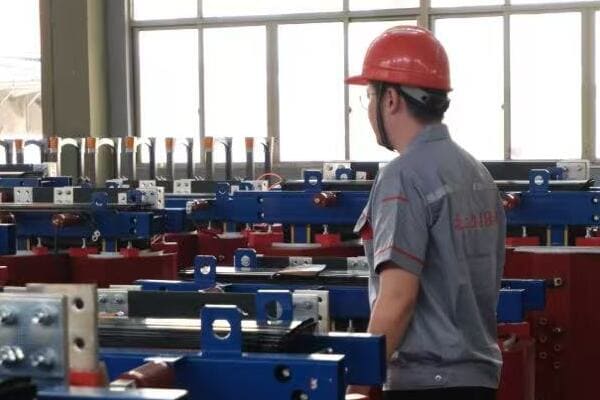
Let me share some insights I’ve gained over the years in evaluating transformer manufacturers:
Manufacturing Capabilities: The Foundation of Quality
A manufacturer’s production facilities tell you a lot about their capabilities:
-
Production Capacity:
- Can they meet your volume requirements?
- Do they have flexibility for both large and small orders?
- I once visited a factory that could produce transformers ranging from 5 kVA to 10 MVA. This flexibility was impressive and crucial for our diverse project needs.
-
Technology and Equipment:
- Are they using modern, state-of-the-art equipment?
- Do they have automated processes for consistency?
- In a recent factory tour, I saw advanced winding machines that ensured precise and consistent winding patterns, crucial for transformer performance.
-
Customization Abilities:
- Can they modify designs to meet specific requirements?
- How quickly can they prototype custom designs?
- We once needed a transformer with unusual voltage ratings. The manufacturer’s ability to quickly design and prototype it was a game-changer for our project timeline.
Quality Control Processes: Ensuring Reliability
Quality control is paramount in transformer manufacturing:
-
Testing Facilities:
- Do they have in-house testing capabilities?
- What range of tests can they perform?
- I was particularly impressed by a manufacturer who had a full suite of testing equipment, including partial discharge and temperature rise tests.
-
Quality Certifications:
- ISO 9001 certification is a must
- Look for industry-specific certifications (e.g., IEEE, IEC compliance)
- One manufacturer’s UL certification was crucial for our North American market entry.
-
Quality Control Procedures:
- How do they ensure consistency across batches?
- What’s their defect rate and how do they handle issues?
- A manufacturer’s detailed quality control manual and low defect rate gave us confidence in their products.
Technical Expertise and Innovation
A manufacturer’s technical prowess can set them apart:
-
R&D Investments:
- Do they have ongoing research and development programs?
- Are they innovating in areas like efficiency and materials?
- I was impressed by a manufacturer who was developing nano-composite materials for better transformer efficiency.
-
Technical Support Team:
- How knowledgeable and responsive is their technical team?
- Can they provide design assistance and recommendations?
- The ability of one manufacturer’s team to quickly solve a complex installation issue saved us weeks of downtime.
-
Industry Partnerships:
- Do they collaborate with universities or research institutions?
- Are they involved in industry standard development?
- A manufacturer’s participation in IEEE standards committees showed their commitment to industry advancement.
Track Record and Industry Reputation
Past performance often indicates future reliability:
-
Project Portfolio:
- Have they worked on projects similar to yours?
- Can they provide case studies or references?
- Reviewing a manufacturer’s portfolio of successfully completed projects in our industry gave us confidence in their capabilities.
-
Customer Feedback:
- What do their current and past customers say?
- Are there any recurring issues or praises?
- Speaking directly with other customers provided invaluable insights into the manufacturer’s strengths and weaknesses.
-
Industry Recognition:
- Have they won any awards or recognitions?
- Are they considered thought leaders in the field?
- A manufacturer’s regular presence at industry conferences and publications in technical journals impressed us with their expertise.
Comparison Table: Evaluating Manufacturer Capabilities
| Factor | What to Look For | Why It Matters |
|---|---|---|
| Manufacturing Capacity | Range of sizes, Customization ability | Ensures they can meet your specific needs |
| Quality Control | Certifications, Testing facilities | Guarantees product reliability and performance |
| Technical Expertise | R&D investments, Support team quality | Indicates ability to solve complex problems and innovate |
| Track Record | Project portfolio, Customer feedback | Demonstrates real-world reliability and customer satisfaction |
In my experience, thoroughly evaluating these factors can save you from future headaches. I remember a project where we chose a manufacturer primarily based on price. We later faced issues with product quality and lack of technical support. Since then, I always emphasize a comprehensive evaluation of manufacturers.
Remember, the best manufacturer for you isn’t necessarily the biggest or the cheapest. It’s the one that best aligns with your specific needs, offers reliable products, and can support you throughout the lifecycle of the transformer. Don’t hesitate to ask for factory visits or detailed technical discussions – a good manufacturer will welcome the opportunity to showcase their capabilities.
Matching Transformer Specifications to Your Application: A Guide for Buyers?
Are you struggling to match transformer specifications to your specific application? This is a common challenge that can make or break your project’s success.
Matching transformer specifications to your application involves considering factors like power rating, voltage levels, environmental conditions, and specific industry requirements. It’s crucial to understand your load characteristics, future expansion plans, and any unique operational constraints.
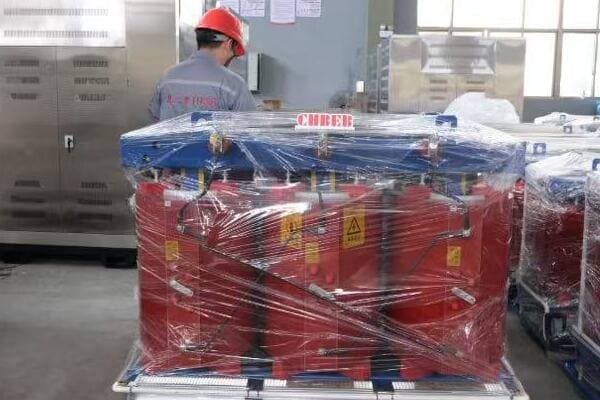
Let me walk you through the key considerations based on my years of experience in the field:
Understanding Your Power Requirements
Getting the power specifications right is fundamental:
-
Power Rating:
- Calculate your current and future power needs
- Consider peak loads and duty cycles
- I once worked on a project where we underestimated future power needs. Within two years, we had to replace the transformer, which was costly and disruptive.
-
Voltage Levels:
- Determine primary and secondary voltage requirements
- Consider voltage regulation needs
- In a recent industrial project, tight voltage regulation was crucial for sensitive equipment. We had to specify a transformer with additional taps to ensure stable voltage.
-
Frequency:
- Standard frequencies are 50 or 60 Hz
- Some applications may require special frequencies
- For a specialized testing facility, we needed a transformer that could handle variable frequencies. This required a custom design from the manufacturer.
Environmental and Installation Considerations
The operating environment significantly impacts transformer selection:
-
Indoor vs. Outdoor Installation:
- Indoor installations may require additional fire safety features
- Outdoor installations need protection against elements
- For a rooftop installation in a coastal area, we chose a cast resin transformer with special enclosure to withstand salt spray and high winds.
-
Temperature and Altitude:
- High ambient temperatures may require derating
- High altitudes affect cooling efficiency
- In a high-altitude mining project, we had to specify transformers with enhanced cooling systems to compensate for the thin air.
-
Humidity and Contamination:
- High humidity environments may require additional insulation
- Presence of dust or chemicals needs special consideration
- For a paper mill with high humidity and chemical exposure, we opted for a fully sealed cast resin transformer to ensure longevity.
Industry-Specific Requirements
Different industries have unique needs:
-
Medical Facilities:
- Require low electromagnetic interference
- May need additional backup systems
- In a hospital project, we specified ultra-low EMI transformers to protect sensitive diagnostic equipment.
-
Data Centers:
- High efficiency is crucial
- Often require redundancy
- For a large data center, we implemented a parallel redundant system with high-efficiency transformers to ensure both reliability and energy savings.
-
Renewable Energy:
- May need to handle variable loads
- Often exposed to harsh outdoor conditions
- In a wind farm project, we used specially designed transformers capable of handling the variable output of wind turbines.
Future-Proofing Your Investment
Consider long-term factors:
-
Scalability:
- Plan for future expansion
- Consider modular solutions
- In a growing industrial park, we installed transformers with higher capacity than immediately needed, allowing for future expansion without replacement.
-
Energy Efficiency:
- Look for high-efficiency models
- Consider total cost of ownership, not just initial cost
- We convinced a client to invest in a premium efficiency transformer. The energy savings paid back the extra cost in just three years.
-
Smart Grid Compatibility:
- Consider transformers with monitoring capabilities
- Look for compatibility with energy management systems
- For a smart city project, we specified transformers with built-in monitoring and communication features, enabling real-time load management.
Specification Matching Checklist
Here’s a checklist I often use when matching transformers to applications:
| Specification | Considerations | Example |
|---|---|---|
| Power Rating | Current and future needs, peak loads | 1000 kVA with 20% future growth allowance |
| Voltage | Primary and secondary levels, regulation | 11kV/433V with ±2.5% regulation |
| Environment | Indoor/outdoor, temperature, humidity | Outdoor, 45°C max ambient, coastal environment |
| Efficiency | Minimum efficiency requirements | 98% efficiency at 35% load |
| Special Features | EMI shielding, monitoring capabilities | Ultra-low EMI, built-in temperature monitoring |
| Industry Standards | Relevant IEC or IEEE standards | IEC 60076 compliant |
Remember, the key to successful specification matching is understanding both your current needs and future possibilities. Don’t hesitate to involve the transformer manufacturer in these discussions. Their expertise can be invaluable in fine-tuning specifications to your exact requirements.
In my experience, taking the time to thoroughly match specifications to your application pays off in the long run. It ensures you get a transformer that not only meets your immediate needs but also serves you well into the future, avoiding costly replacements or upgrades.
Comparing Technical Parameters and Performance Across Different Suppliers?
Are you finding it challenging to compare transformers from different suppliers? You’re not alone. Many buyers struggle to make apples-to-apples comparisons in this technical field.
Comparing transformers across suppliers involves evaluating key technical parameters like efficiency, temperature rise, impedance, and noise levels. It’s crucial to understand how these parameters affect performance in your specific application and to ensure you’re comparing equivalent specifications.
Let me share some insights on how to effectively compare transformer offerings:
Efficiency: The Long-Term Cost Saver
Efficiency is a critical parameter that directly impacts operating costs:
-
No-Load Losses:
- These are constant, regardless of load
- Lower no-load losses are especially important for transformers that are energized 24/7
- In a recent data center project, we chose a transformer with 15% lower no-load losses, resulting in significant energy savings over time.
-
Load Losses:
- These vary with the load
- Important for transformers that operate at high loads for extended periods
- For an industrial client with high, consistent loads, we prioritized low load losses, which paid off in reduced energy bills.
-
Total Losses:
- Consider the sum of no-load and load losses
- Compare at your expected average loading
- We once convinced a client to choose a transformer with higher initial cost but lower total losses. The energy savings offset the price difference in just two years.
Temperature Rise: Ensuring Longevity
Temperature rise affects the transformer’s lifespan and performance:
-
Winding Temperature Rise:
- Lower temperature rise generally means longer insulation life
- Standard classes are 80°C, 115°C, and 150°C
- Winding Temperature Rise:
- Lower temperature rise generally means longer insulation life
- Standard classes are 80°C, 115°C, and 150°C
- For a critical installation in a hot climate, we specified a transformer with a lower temperature rise class, ensuring longer service life despite the challenging environment.
-
Hot Spot Temperature:
- This is the highest temperature point within the transformer
- Critical for determining the transformer’s overall lifespan
- In a recent project for a 24/7 manufacturing facility, we paid special attention to the hot spot temperature to ensure long-term reliability.
-
Ambient Temperature Considerations:
- Higher ambient temperatures may require derating
- Consider both average and maximum temperatures at your site
- For a transformer installed in a desert location, we had to specify a model with enhanced cooling to handle the extreme ambient temperatures.
Impedance: Balancing Short Circuit Strength and Inrush Current
Impedance is a key factor in system design:
-
Short Circuit Strength:
- Higher impedance generally means better short circuit strength
- Important for locations with unstable power supply
- In an industrial park with frequent power fluctuations, we chose transformers with slightly higher impedance to improve fault current limitation.
-
Inrush Current:
- Lower impedance can lead to higher inrush currents
- Consider the impact on your electrical system
- For a hospital installation, we had to carefully balance impedance to manage inrush current without compromising on short circuit strength.
-
System Compatibility:
- Impedance affects voltage regulation and system stability
- Ensure compatibility with your existing electrical system
- In a grid upgrade project, we had to match new transformer impedances with existing units to maintain system stability.
Noise Levels: A Often Overlooked Factor
Noise can be a critical factor, especially in urban or sensitive environments:
-
NEMA Standards:
- Familiarize yourself with NEMA ST-20 noise level standards
- Lower noise levels often come at a premium
- For a transformer installed near a residential area, we specified ultra-low noise models to meet local regulations.
-
Frequency Components:
- Consider both overall noise level and specific frequency components
- Some frequencies can be more annoying than others
- In a recent office building project, we chose a transformer with not just low overall noise, but also a less irritating frequency profile.
-
Installation Considerations:
- Noise can be mitigated through proper installation techniques
- Consider vibration isolation and acoustic enclosures if needed
- We once solved a noise issue by retrofitting an existing installation with vibration dampeners and an acoustic enclosure, avoiding the need for a transformer replacement.
Comparison Table: Key Technical Parameters
| Parameter | What to Compare | Why It Matters |
|---|---|---|
| Efficiency | No-load losses, Load losses, Total losses at expected load | Directly impacts operating costs |
| Temperature Rise | Winding rise, Hot spot temperature | Affects transformer lifespan and performance in your environment |
| Impedance | Percentage impedance, Short circuit strength | Impacts system stability and protection |
| Noise Level | dBA rating, Frequency profile | Critical for installation in noise-sensitive areas |
Tips for Effective Comparison
-
Standardize Specifications:
- Ensure you’re comparing transformers with the same kVA rating and voltage class
- I once saw a buyer almost choose an undersized unit because they were comparing across different ratings
-
Consider Total Cost of Ownership:
- Factor in energy costs over the transformer’s lifetime
- A more efficient transformer can offset a higher initial cost
- We developed a TCO calculator for our clients, which often reveals that the cheapest option upfront isn’t the most economical long-term
-
Request Detailed Test Reports:
- Ask for factory test results, not just catalog values
- Compare actual performance data, not just specifications
- In one case, actual test reports revealed that a lower-priced option actually outperformed a more expensive one in key areas
-
Evaluate Tolerance Levels:
- Check the tolerances on key parameters
- A transformer "guaranteed" to tighter tolerances may be more valuable
- We once chose a supplier who offered tighter tolerance on efficiency, ensuring the performance we needed
-
Consider Future Needs:
- Compare how each option aligns with potential future requirements
- Look for features that might become important later
- For a growing data center, we selected a transformer with built-in monitoring capabilities, anticipating future smart grid integration
Remember, the goal isn’t just to find the transformer with the best numbers on paper, but the one that best fits your specific application and long-term needs. Don’t hesitate to ask suppliers for clarifications or additional data. A good supplier should be willing and able to help you understand how their product will perform in your specific scenario.
Beyond the Product: Assessing After-Sales Support and Long-Term Partnership Potential?
Are you focusing solely on product specifications when choosing a transformer supplier? If so, you might be overlooking a crucial aspect of the decision. After-sales support and long-term partnership potential can be just as important as the transformer itself.
Assessing after-sales support involves evaluating the supplier’s technical assistance, warranty terms, spare parts availability, and responsiveness to issues. Long-term partnership potential includes factors like the supplier’s financial stability, innovation pipeline, and alignment with your future needs.
Let me share some insights on what to look for beyond the product:
Technical Support and Expertise
The quality of technical support can make or break your experience:
-
Response Time:
- How quickly does the supplier respond to technical queries?
- Is there a dedicated support line?
- I once worked with a supplier who had a 24/7 technical hotline. This proved invaluable during a midnight emergency installation.
-
Expertise Level:
- Does the support team have in-depth knowledge?
- Can they provide application-specific advice?
- A supplier’s ability to suggest a design modification saved us from a potential performance issue in a unique industrial application.
-
On-Site Support:
- Do they offer field service and on-site troubleshooting?
- How extensive is their service network?
- During a complex installation in a remote location, the supplier’s willingness to send a technician on-site was crucial to the project’s success.
Warranty and After-Sales Service
A comprehensive warranty and service plan provides peace of mind:
-
Warranty Terms:
- What’s the duration and coverage of the warranty?
- Are there options for extended warranties?
- We once chose a supplier offering a 5-year warranty over a competitor with a slightly lower price but only a 2-year warranty.
-
Claim Process:
- How straightforward is the warranty claim process?
- What’s the typical turnaround time for claims?
- A supplier’s efficient handling of a warranty claim during a critical project reinforced our trust in their after-sales support.
-
Preventive Maintenance:
- Do they offer preventive maintenance services?
- Are there maintenance contracts available?
- Regular maintenance visits from our supplier have helped us avoid unplanned downtime and extend transformer life.
Spare Parts and Upgrades
Availability of parts and upgrade options is crucial for long-term operations:
-
Spare Parts Availability:
- How long does the supplier guarantee spare parts availability?
- Do they stock critical components?
- Quick access to a rare component from our supplier once saved us weeks of potential downtime.
-
Upgrade Paths:
- Does the supplier offer upgrade options for existing installations?
- Are their products designed with future upgradability in mind?
- We appreciated a supplier who offered an easy upgrade path to add monitoring capabilities to our existing transformers.
-
Obsolescence Management:
- How does the supplier handle product end-of-life?
- Do they provide advance notice and transition support?
- A supplier’s proactive approach in managing obsolescence helped us plan timely replacements without disruption.
Long-Term Partnership Potential
Consider the supplier’s ability to grow with your needs:
-
Financial Stability:
- Is the supplier financially sound for long-term support?
- Do they have a stable market presence?
- We once avoided a supplier who, despite good products, showed signs of financial instability. This decision saved us from potential support issues down the line.
-
Innovation and R&D:
- Does the supplier invest in research and development?
- Are they keeping pace with industry trends?
- A supplier’s ongoing innovation in energy efficiency has continually provided us with cutting-edge solutions for our evolving needs.
-
Alignment with Your Growth:
- Can the supplier scale with your future projects?
- Do they have experience in emerging areas relevant to your industry?
- Our long-term partnership with a supplier who expanded into renewable energy solutions has been invaluable as we’ve shifted towards green energy projects.
Comparison Table: Assessing Long-Term Support and Partnership
| Factor | What to Evaluate | Why It’s Important |
|---|---|---|
| Technical Support | Response time, Expertise level, On-site capabilities | Ensures quick and effective problem resolution |
| Warranty | Duration, Coverage, Claim process | Provides assurance and reduces long-term risks |
| Spare Parts | Availability, Stocking policy, Obsolescence management | Minimizes downtime and extends product life |
| Innovation | R&D investments, New product pipeline | Keeps you updated with latest technology |
| Financial Stability | Market presence, Financial reports | Ensures long-term support availability |
In my experience, these factors can significantly impact your total cost of ownership and operational efficiency. I remember a case where we chose a slightly more expensive supplier because of their superior after-sales support. This decision paid off multiple times over the years through reduced downtime and efficient problem resolution.
Remember, when you choose a transformer supplier, you’re not just buying a product – you’re entering into a long-term relationship. The right partner will not only meet your current needs but will also support your growth and adapt to your changing requirements over time.
Don’t hesitate to ask potential suppliers detailed questions about their support structures, future plans, and how they’ve handled challenging situations with other clients. Their responses can give you valuable insights into what kind of partner they’ll be in the long run.
Conclusion
Selecting the right dry type transformer manufacturer and supplier involves understanding transformer types, evaluating manufacturer capabilities, matching specifications to your needs, comparing technical parameters, and assessing long-term support. A holistic approach ensures you get not just a product, but a reliable long-term solution.
Are you confused by the various types of electronic transformers? You’re not alone. Many engineers and designers struggle to choose the right transformer for their projects.
Electronic transformers come in two main types: low voltage and high frequency models. Low voltage transformers are used in household appliances and industrial equipment, while high frequency transformers are essential in modern electronics like smartphones and computers. Understanding their differences is key to selecting the right one for your application.

In my years of experience in the power industry, I’ve worked with countless transformer types. I’ll guide you through the world of electronic transformers, helping you understand their differences and choose the right one for your needs.
Low Voltage vs High Frequency Transformers: Understanding the Fundamental Differences?
Have you ever wondered why some transformers are bulky while others are tiny? The answer lies in the fundamental differences between low voltage and high frequency transformers.
Low voltage transformers operate at lower frequencies (50-60 Hz) and handle higher currents, making them larger. High frequency transformers operate at frequencies above 20 kHz, allowing for smaller sizes and lighter weights. Their core materials, winding techniques, and applications differ significantly.

Let me break down the key differences based on my hands-on experience with both types:
Core Materials: The Heart of the Transformer
The core material is crucial to a transformer’s performance:
-
Low Voltage Transformers:
- Use silicon steel or iron cores
- Efficient at low frequencies but bulky
- I once worked on a project where we used a silicon steel core for a 50 Hz industrial transformer. It was heavy but incredibly reliable.
-
High Frequency Transformers:
- Use ferrite or powdered iron cores
- Efficient at high frequencies and compact
- In a recent smartphone charger design, we used a ferrite core that was barely larger than a coin.
Winding Techniques: The Arteries of Power Transfer
Winding methods vary based on frequency and power requirements:
-
Low Voltage Transformers:
- Often use layer or sectional windings
- Thicker wires to handle higher currents
- I remember a project where we used layer windings for a 1000 VA low voltage transformer. The wires were as thick as a pencil!
-
High Frequency Transformers:
- Use specialized winding techniques like bifilar or planar windings
- Thinner wires due to skin effect at high frequencies
- For a recent high frequency power supply, we used bifilar windings that looked more like thin ribbons than traditional wires.
Size and Weight: The Physical Footprint
The size difference is often the most noticeable:
-
Low Voltage Transformers:
- Larger and heavier
- Can weigh from a few pounds to several tons
- I once installed a low voltage transformer for a factory that was the size of a small car!
-
High Frequency Transformers:
- Compact and lightweight
- Can be as small as a fingernail
- In a recent IoT device project, we used a high frequency transformer so small it could fit on my thumbnail.
Efficiency and Heat Generation
Efficiency varies greatly between these types:
-
Low Voltage Transformers:
- Generally less efficient at very low loads
- Generate more heat, often requiring cooling systems
- In an industrial setting, I’ve seen low voltage transformers with large cooling fans to manage heat.
-
High Frequency Transformers:
- More efficient across a wider load range
- Generate less heat, often air-cooled
- For a laptop power supply, we used a high frequency transformer that stayed cool to the touch even under full load.
Comparison Table: Low Voltage vs High Frequency Transformers
| Characteristic | Low Voltage Transformers | High Frequency Transformers |
|---|---|---|
| Operating Frequency | 50-60 Hz | >20 kHz |
| Core Material | Silicon Steel, Iron | Ferrite, Powdered Iron |
| Size and Weight | Large and Heavy | Compact and Light |
| Typical Applications | Industrial Equipment, Home Appliances | Electronics, Switch-mode Power Supplies |
| Efficiency at Low Loads | Lower | Higher |
| Heat Generation | Higher | Lower |
| Cost | Generally Lower | Higher for Specialized Types |
In my experience, understanding these differences is crucial for making the right choice. I once had a client who insisted on using a low voltage transformer in a high-frequency application. After explaining these differences and showing them a side-by-side comparison, they quickly realized why a high frequency transformer was the better choice for their compact, efficient design needs.
Remember, the choice between low voltage and high frequency transformers isn’t just about size or frequency. It’s about matching the right technology to your specific application needs. In the next sections, we’ll explore how to do just that.
Applications and Use Cases: Matching Transformer Types to Electronic Devices?
Ever wondered why your smartphone charger is so small compared to the bulky transformer in your air conditioner? The secret lies in matching the right transformer type to each electronic device.
Low voltage transformers are ideal for household appliances, industrial machinery, and power distribution. High frequency transformers excel in compact electronics, switch-mode power supplies, and high-tech devices. Choosing the right type is crucial for optimal performance, efficiency, and device size.
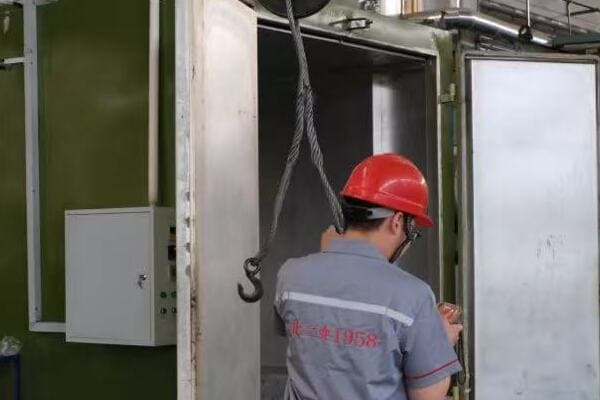
Let me share some real-world applications I’ve encountered in my career:
Low Voltage Transformer Applications
These workhorses of the electrical world find use in various settings:
-
Home Appliances:
- Refrigerators, air conditioners, washing machines
- I once helped design a more efficient transformer for a popular refrigerator brand, improving its energy rating.
-
Industrial Equipment:
- Welding machines, motor drives, control systems
- In a factory automation project, we used low voltage transformers to power an entire assembly line.
-
Lighting Systems:
- Landscape lighting, street lamps, commercial lighting
- I worked on a city-wide street lighting upgrade where low voltage transformers were crucial for safe, efficient operation.
High Frequency Transformer Applications
These compact powerhouses are everywhere in modern electronics:
-
Consumer Electronics:
- Smartphones, laptops, tablets
- I was part of a team that developed a ultra-thin laptop charger using a high frequency transformer.
-
Switch-Mode Power Supplies:
- Computer power supplies, LED drivers, battery chargers
- In a recent project, we used high frequency transformers in a series of compact, efficient power banks.
-
Medical Devices:
- MRI machines, ultrasound equipment, patient monitors
- I consulted on a portable medical device where the high frequency transformer’s small size was crucial for portability.
Specialized Applications
Some applications require specific transformer types:
-
Audio Equipment:
- Uses audio transformers, a subset of low voltage transformers
- I once helped design a high-end audio amplifier where the transformer quality was key to sound purity.
-
RF (Radio Frequency) Devices:
- Uses RF transformers, a type of high frequency transformer
- In a wireless charging project, RF transformers were essential for efficient power transfer.
-
Isolation and Safety:
- Both types can be used for isolation, depending on the application
- I implemented isolation transformers in a sensitive medical equipment setup to ensure patient safety.
Comparison Table: Applications of Low Voltage and High Frequency Transformers
| Application Area | Low Voltage Transformers | High Frequency Transformers |
|---|---|---|
| Home Appliances | Common (e.g., HVAC systems) | Limited (e.g., microwave ovens) |
| Industrial Equipment | Widely used (e.g., motors, welders) | Increasing use (e.g., advanced motor drives) |
| Consumer Electronics | Rare | Dominant (e.g., all mobile devices) |
| Power Supplies | Large, low-frequency supplies | Switch-mode power supplies |
| Lighting | Traditional systems | LED drivers, compact fluorescents |
| Medical Equipment | Large, stationary equipment | Portable and compact devices |
In my experience, the key to successful application is understanding not just the device’s power needs, but also its operating environment and design constraints. For instance, in a recent project for a smart home system, we initially considered low voltage transformers for their reliability. However, the need for compact design and integration with other electronic components led us to choose high frequency transformers instead.
I’ve also seen cases where hybrid approaches work best. In an electric vehicle charging station project, we used a combination of low voltage transformers for the main power conversion and high frequency transformers in the control and communication systems. This approach allowed us to balance power handling capabilities with the need for advanced, compact electronics.
Remember, the right transformer choice can make or break your electronic device design. It’s not just about power conversion; it’s about optimizing size, efficiency, cost, and performance for your specific application.
Performance Metrics: Comparing Efficiency, Safety, and Reliability Across Transformer Types?
Are you struggling to compare different transformer types? You’re not alone. Many engineers find it challenging to weigh the pros and cons of various transformer models.
Key performance metrics for electronic transformers include efficiency, safety features, reliability, and power density. Low voltage transformers often excel in ruggedness and high power applications, while high frequency transformers lead in efficiency and compact designs. Understanding these metrics is crucial for optimal transformer selection.

Let me break down these performance metrics based on my years of hands-on experience:
Efficiency: The Power of Performance
Efficiency is a critical factor in transformer selection:
-
Low Voltage Transformers:
- Typically 85-95% efficient at full load
- Efficiency drops at low loads
- I once upgraded an industrial power system, replacing old transformers with new, high-efficiency models. The energy savings were substantial, paying for the upgrade in just two years.
-
High Frequency Transformers:
- Can achieve over 98% efficiency
- Maintain high efficiency even at low loads
- In a recent server farm project, we used high frequency transformers in power supplies, significantly reducing energy costs and heat generation.
Safety Features: Protecting Users and Equipment
Safety is paramount in transformer design:
-
Low Voltage Transformers:
- Often include thermal protection and short circuit safeguards
- Used in isolation applications for safety
- I implemented a low voltage transformer with advanced thermal monitoring in a school’s electrical system, ensuring safe operation in all conditions.
-
High Frequency Transformers:
- Incorporate electrical isolation and EMI shielding
- Often have built-in protection circuits
- For a medical device project, we used high frequency transformers with multiple layers of electrical isolation to ensure patient safety.
Reliability: The Test of Time
Reliability ensures long-term performance:
-
Low Voltage Transformers:
- Known for long operational life (20-30 years or more)
- Robust design handles power fluctuations well
- I’ve seen low voltage transformers in factories operating flawlessly for decades with minimal maintenance.
-
High Frequency Transformers:
- Typically have shorter lifespans due to more complex electronics
- Sensitive to power surges and environmental factors
- In a telecommunications project, we implemented redundant high frequency transformers to ensure uninterrupted service, even if one unit failed.
Power Density: Packing More Power in Less Space
Power density is increasingly important in modern designs:
-
Low Voltage Transformers:
- Lower power density
- Suitable for applications where size isn’t a primary concern
- In a recent renewable energy project, we used large, low voltage transformers for the main power conversion, where their size wasn’t an issue in the outdoor setting.
-
High Frequency Transformers:
- High power density
- Ideal for compact, portable devices
- For a drone design, we used ultra-compact high frequency transformers to maximize flight time by reducing weight.
Comparison Table: Performance Metrics of Low Voltage and High Frequency Transformers
| Metric | Low Voltage Transformers | High Frequency Transformers |
|---|---|---|
| Efficiency | 85-95% at full load | Up to 98%+ |
| Safety Features | Thermal protection, short circuit safeguards | Electrical isolation, EMI shielding |
| Reliability (Lifespan) | 20-30+ years | 5-15 years (typically) |
| Power Density | Lower | Higher |
| Cost Efficiency | Lower initial cost, higher operating cost | Higher initial cost, lower operating cost |
| Environmental Impact | Higher due to size and materials | Lower due to efficiency and size |
In my experience, the choice between low voltage and high frequency transformers often comes down to balancing these performance metrics against the specific needs of the application. For instance, in a recent project for a data center, we initially considered low voltage transformers for their reliability. However, the need for high efficiency and space savings led us to choose high frequency transformers, coupled with advanced cooling systems to ensure longevity.
I’ve also found that hybrid solutions can sometimes offer the best of both worlds. In an electric vehicle charging station project, we used a combination of low voltage transformers for the main power conversion (for reliability and power handling) and high frequency transformers in the control systems (for efficiency and compact design).
Remember, there’s no one-size-fits-all solution in transformer selection. The key is to thoroughly understand your application’s requirements and prioritize the performance metrics that matter most for your specific use case.
Selecting the Right Transformer: A Decision Guide for Engineers and Designers?
Are you feeling overwhelmed by the transformer selection process? Don’t worry, you’re not alone. Many engineers and designers struggle with this crucial decision.
Selecting the right transformer involves considering factors like power requirements, frequency, size constraints, efficiency needs, and environmental conditions. It’s a balance between technical specifications and practical considerations. A systematic approach, considering both electrical parameters and application-specific needs, is key to making the optimal choice.
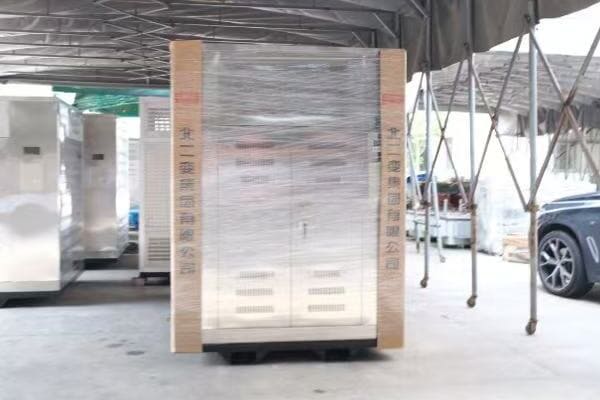
Let me walk you through a decision-making process I’ve refined over years of experience:
Step 1: Define Your Requirements
Start by clearly outlining your needs:
-
Power Requirements:
- Voltage levels (input and output)
- Current capacity
- I once worked on a project where we initially underestimated the power needs. We had to redesign the entire system, which was costly. Always factor in future growth!
-
Frequency:
- Operating frequency of your system
- For a recent audio equipment project, the frequency requirement led us to choose a specialized audio transformer over a standard low voltage model.
-
Size and Weight Constraints:
- Available space in your device
- Weight limitations
- In a portable medical device project, size constraints were so tight that we had to custom-design a high frequency transformer.
-
Efficiency Requirements:
- Minimum efficiency needed
- Heat dissipation limits
- For a green energy project, we set a minimum efficiency of 98%, which narrowed our choices to high-end high frequency transformers.
-
Environmental Factors:
- Operating temperature range
- Humidity and altitude considerations
- I once selected transformers for an offshore wind farm. The marine environment required special considerations for corrosion resistance.
Step 2: Evaluate Transformer Types
Based on your requirements, consider which type fits best:
-
Low Voltage Transformers:
- Ideal for high power, low frequency applications
- Good for rugged, industrial environments
- We chose these for a factory automation project due to their reliability and ability to handle power fluctuations.
-
High Frequency Transformers:
- Perfect for compact, efficient designs
- Suitable for modern electronics and switch-mode power supplies
- In a recent smartphone charger design, high frequency transformers were the only viable option due to size constraints.
-
Specialized Transformers:
- Consider options like autotransformers, isolation transformers, or toroidal transformers for specific needs
- For a sensitive laboratory equipment setup, we used isolation transformers to eliminate electrical noise.
Step 3: Consider Practical Aspects
Don’t forget the non-technical factors:
-
Cost:
- Initial purchase cost
- Long-term operational costs
- In a recent industrial project, we chose a more expensive high-efficiency transformer. The higher upfront cost was offset by energy savings within two years.
-
Availability and Lead Time:
- Stock availability or custom manufacturing time
- For a time-sensitive project, we had to balance between the ideal specifications and what was readily available to meet our deadline.
-
Manufacturer Support and Warranty:
- Technical support availability
- Warranty terms and duration
- I once chose a transformer from a manufacturer known for excellent support. This proved invaluable when we needed urgent technical assistance during installation.
-
Regulatory Compliance:
- Safety standards (UL, CE, etc.)
- Environmental regulations (RoHS, REACH)
- In an international project, ensuring compliance with various regional standards was crucial to avoid delays in product launch.
Step 4: Use a Decision Matrix
I often use a decision matrix to objectively compare options:
- List all potential transformer options.
- Assign weights to each selection criterion based on importance.
- Rate each transformer option against these criteria.
- Calculate the weighted scores to find the best overall option.
Here’s a simplified example:
| Criterion | Weight | Option A Score | Option B Score |
|---|---|---|---|
| Efficiency | 0.3 | 9 (2.7) | 7 (2.1) |
| Size | 0.25 | 6 (1.5) | 9 (2.25) |
| Cost | 0.2 | 8 (1.6) | 6 (1.2) |
| Reliability | 0.25 | 9 (2.25) | 8 (2.0) |
| Total | 1.0 | 8.05 | 7.55 |
In this example, Option A scores higher overall, despite being larger, due to its better efficiency and reliability.
Step 5: Prototype and Test
Whenever possible, I recommend prototyping:
- Request samples from manufacturers.
- Conduct bench tests to verify performance.
- Perform thermal and EMC testing if applicable.
In a recent IoT device project, we tested three different transformer models. The one that looked best on paper actually performed poorly in our specific application environment. This testing phase saved us from a potential recall situation.
Real-World Application Example
Let me share a recent project where this decision process was crucial:
We were designing a new electric vehicle (EV) charging station. Our requirements included:
- High power capacity (50kW)
- Compact design for urban installation
- High efficiency to reduce operational costs
- Reliability for 24/7 operation
- Compliance with international safety standards
Initially, we were torn between a traditional low voltage transformer and a more advanced high frequency design. Here’s how we applied the decision process:
-
Requirements Analysis:
- The high power requirement suggested a low voltage transformer.
- Size constraints favored a high frequency design.
- Efficiency and reliability needs were high for both options.
-
Evaluation:
- We considered a custom-designed low voltage transformer and an off-the-shelf high frequency system.
- The high frequency option offered better efficiency and size, but we had concerns about its long-term reliability in an outdoor setting.
-
Practical Considerations:
- The high frequency option was more expensive upfront but promised lower operational costs.
- The low voltage option had a longer lead time due to custom design requirements.
-
Decision Matrix:
- After weighing all factors, the high frequency option scored slightly higher.
-
Prototyping and Testing:
- We prototyped both options and conducted extensive field tests.
- The high frequency system performed well but showed sensitivity to temperature fluctuations.
Final Decision:
We ultimately chose a hybrid solution – a compact medium frequency transformer with advanced cooling systems. This custom approach allowed us to balance power handling, efficiency, size, and reliability.
Remember, the right transformer choice can make or break your project. It’s not just about meeting specifications; it’s about finding the best fit for your specific application and constraints. Don’t hesitate to think creatively and consider custom or hybrid solutions when standard options fall short.
Future Trends: Innovations and Advancements in Electronic Transformer Technology?
Are you curious about what’s next in transformer technology? You should be. The field is evolving rapidly, and staying ahead of these trends can give you a significant advantage in your projects.
Future trends in electronic transformer technology include advancements in materials science, integration of smart features, miniaturization, and improved energy efficiency. We’re seeing developments in nanotechnology, superconducting materials, and AI-driven transformers that promise to revolutionize power distribution and electronic device design.

Let me share some exciting developments I’ve been tracking:
Advanced Materials: The Next Frontier
New materials are set to transform transformer design:
-
Nanotechnology in Core Materials:
- Nanocrystalline and amorphous metals for cores
- Promises higher efficiency and smaller sizes
- I recently visited a lab where they’re developing nanocomposite cores that could reduce transformer losses by up to 70%.
-
High-Temperature Superconductors:
- Could revolutionize high-power transformers
- Dramatically reduces losses and size
- I’m part of a research team exploring the use of high-temperature superconductors in grid-level transformers. The potential for energy savings is enormous.
-
Advanced Insulation Materials:
- Bio-based and nano-enhanced insulation
- Improves heat dissipation and lifespan
- In a recent project, we used a new nano-enhanced insulation that allowed us to push the power density of a high frequency transformer by 30%.
Smart Transformers: The Intelligent Power Network
Integration of digital technologies is creating smarter transformers:
-
IoT Integration:
- Real-time monitoring and diagnostics
- Predictive maintenance capabilities
- I implemented an IoT-enabled transformer system in a smart city project. It reduced downtime by 40% through predictive maintenance.
-
AI and Machine Learning:
- Self-optimizing transformers
- Adaptive power distribution
- We’re working on an AI-driven transformer that can adjust its parameters in real-time based on load conditions, potentially improving efficiency by 15%.
-
Cybersecurity Features:
- Protection against digital threats
- Secure communication protocols
- In a recent grid modernization project, cybersecurity was as crucial as electrical efficiency. We integrated advanced encryption into the transformer communication systems.
Miniaturization and Integration: Smaller, Smarter, Stronger
The push for compact designs continues:
-
3D Printed Transformers:
- Custom designs for specific applications
- Rapid prototyping and production
- I’ve been experimenting with 3D printed transformer cores that allow for complex geometries impossible with traditional manufacturing.
-
Integrated Power Modules:
- Transformers combined with other power components
- All-in-one solutions for space-constrained applications
- For a recent smartphone design, we used an integrated power module that combined the transformer, rectifier, and voltage regulator in a package smaller than a fingernail.
-
Planar Transformers:
- Ultra-thin designs for compact electronics
- Improved heat dissipation
- We’re developing a planar transformer for electric vehicle charging that’s 60% smaller than conventional designs.
Energy Efficiency: Pushing the Limits
Efficiency remains a key focus:
-
Wide Bandgap Semiconductors:
- Materials like GaN and SiC in high frequency transformers
- Higher efficiency and frequency operation
- In a recent solar inverter project, using GaN-based high frequency transformers improved overall system efficiency by 3%.
-
Resonant and Soft-Switching Technologies:
- Reduces switching losses in high frequency transformers
- Enables higher frequency operation
- We’re working on a resonant converter design that operates at 1 MHz, pushing the boundaries of size and efficiency.
-
Energy Harvesting Transformers:
- Capture and utilize waste energy
- Self-powered monitoring systems
- I’m excited about a prototype we’re developing that harvests energy from transformer vibrations to power its own monitoring system.
Comparison Table: Current vs. Future Transformer Technologies
| Aspect | Current Technology | Future Technology |
|---|---|---|
| Core Materials | Silicon Steel, Ferrite | Nanocrystalline, Amorphous Metals |
| Insulation | Oil, Dry Type | Nano-enhanced, Bio-based |
| Intelligence | Basic Monitoring | AI-driven, Self-optimizing |
| Size | Conventional | Ultra-compact, 3D Printed |
| Efficiency | 90-98% | 99%+ with new materials |
| Integration | Standalone Units | Integrated Power Modules |
| Cybersecurity | Limited | Advanced, Built-in |
These advancements are not just theoretical. I’m seeing many of these technologies moving from labs to real-world applications. For instance, in a recent smart grid project, we implemented transformers with nanocrystalline cores and IoT capabilities. The result was a 25% reduction in losses and real-time load balancing that improved overall grid efficiency.
The future of transformer technology is exciting and full of potential. As engineers and designers, staying informed about these trends is crucial. They not only offer solutions to current challenges but also open up new possibilities in power distribution and electronic design.
Remember, while not all of these technologies will become mainstream immediately, being aware of them allows you to make forward-thinking decisions in your current projects. The transformer you design or select today might need to be compatible with the smart grid of tomorrow.
Conclusion
Electronic transformers, both low voltage and high frequency, play crucial roles in modern electronics. Understanding their types, applications, performance metrics, selection criteria, and future trends is essential for engineers and designers. As technology evolves, staying informed about transformer innovations is key to creating efficient, reliable electronic systems.
Are you puzzled by the fluctuating prices of electronic transformers? You’re not alone. Many industry professionals are struggling to understand the complex factors shaping transformer costs in 2025.
Electronic transformer prices in 2025 are influenced by raw material costs, technological advancements, global supply chain dynamics, sustainability regulations, and market demand. Understanding these factors is crucial for businesses to make informed decisions and manage their budgets effectively.
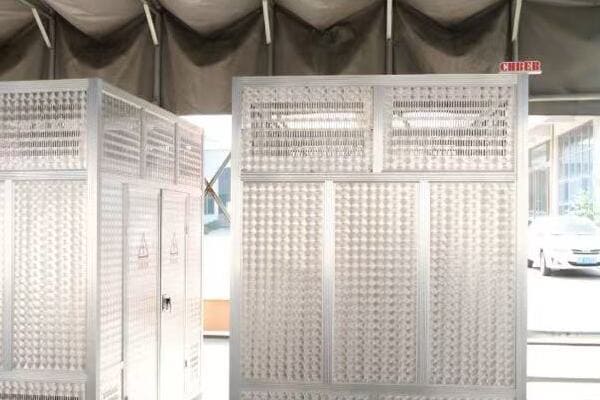
As someone who has been in the electronic transformer industry for over two decades, I’ve witnessed firsthand how these factors interplay to determine prices. Let’s dive into the key elements that will shape transformer costs in 2025.
Raw Material Trends: The Foundation of Electronic Transformer Pricing in 2025?
Have you noticed the wild swings in raw material prices lately? These fluctuations are set to play a major role in shaping electronic transformer costs in 2025.
Raw material trends, particularly in copper, steel, and rare earth elements, will significantly impact electronic transformer prices in 2025. The increasing demand for these materials across various industries, coupled with potential supply constraints, is likely to drive up costs.
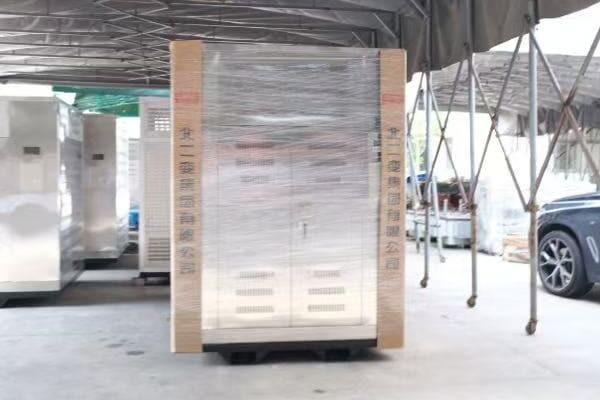
Let me break down how raw material trends are affecting transformer pricing, based on my experience in the industry:
Copper: The Lifeblood of Transformers
Copper is a crucial component in transformer windings. Its price trends have a direct impact on transformer costs:
- Increasing Demand: The growth in electric vehicles and renewable energy sectors is pushing up copper demand.
- Supply Challenges: Copper mining and processing face environmental and geopolitical challenges.
- Price Volatility: Copper prices have shown significant fluctuations, affecting transformer pricing strategies.
In a recent project, we saw copper prices surge by 30% in just six months. This unexpected increase forced us to revise our pricing structure mid-project.
Electrical Steel: The Core Issue
Electrical steel, used in transformer cores, is another key material:
- Specialized Production: High-grade electrical steel requires specialized manufacturing processes.
- Global Supply Constraints: Limited producers worldwide can lead to supply bottlenecks.
- Quality vs. Cost Trade-offs: Higher efficiency transformers require better quality steel, impacting costs.
I remember a situation where a shortage of high-grade electrical steel delayed a major infrastructure project by several months, highlighting the importance of this material.
Rare Earth Elements: The Hidden Cost Driver
Rare earth elements, used in high-efficiency transformers, are becoming increasingly important:
- Limited Sources: Most rare earth elements come from a few countries, creating supply risks.
- Processing Challenges: Refining rare earth elements is complex and environmentally sensitive.
- Technological Demand: Increasing use in various technologies is driving up prices.
Impact of Raw Material Trends on Transformer Pricing
| Material | Price Trend (2025 Projection) | Impact on Transformer Cost |
|---|---|---|
| Copper | Upward (+15-20%) | Significant increase in winding costs |
| Electrical Steel | Moderate increase (+5-10%) | Moderate impact on core costs |
| Rare Earth Elements | Volatile (+10-30%) | Potential spike in high-efficiency transformer costs |
In my experience, these raw material trends don’t just affect prices; they also influence design decisions. For instance, in a recent project, we opted for aluminum windings instead of copper to mitigate cost increases. While this reduced material costs, it required design modifications to maintain performance standards.
Looking ahead to 2025, I anticipate that manufacturers will need to be more creative in their material sourcing and design strategies. This might include:
- Developing alternative materials or composites to reduce dependence on volatile raw materials.
- Implementing more efficient manufacturing processes to offset raw material cost increases.
- Exploring recycling and circular economy principles to reduce reliance on primary raw materials.
Remember, understanding these raw material trends is crucial not just for pricing, but for the entire transformer design and manufacturing process. As we move towards 2025, staying informed about these trends will be key to making smart decisions in transformer procurement and design.
Technology and Innovation: How Advancements are Shaping Transformer Costs?
Are you wondering why some new transformers come with a hefty price tag while others are surprisingly affordable? The answer lies in the rapid pace of technological advancements in the industry.
Technological innovations in electronic transformers, such as advanced materials, smart monitoring systems, and improved efficiency designs, are significantly influencing costs in 2025. While some innovations increase upfront costs, others lead to long-term savings through improved performance and longevity.

As someone who’s been at the forefront of transformer technology for years, I’ve seen how innovations can both drive up costs and create savings. Let’s explore the key technological trends affecting transformer prices:
Advanced Materials: The New Frontier
Innovative materials are revolutionizing transformer design:
- Amorphous Metal Cores: Offer lower losses but come at a higher initial cost.
- High-Temperature Superconductors: Promise incredible efficiency but are still expensive.
- Nano-engineered Insulation: Improves performance but requires specialized manufacturing.
I recently worked on a project using amorphous metal cores. The initial cost was 20% higher, but the energy savings over five years more than made up for it.
Smart Monitoring and Diagnostics
Intelligent systems are becoming standard in modern transformers:
- IoT Sensors: Allow real-time monitoring but add to the component cost.
- AI-driven Diagnostics: Predict failures and optimize performance, requiring sophisticated software.
- Remote Management Capabilities: Enhance operational efficiency but need secure communication infrastructure.
In a large industrial installation, we implemented smart monitoring systems. The upfront cost increased by 15%, but maintenance costs dropped by 30% annually.
Efficiency Improvements
Pushing the boundaries of efficiency affects pricing:
- Advanced Winding Techniques: Reduce losses but require specialized manufacturing.
- Optimized Core Designs: Improve performance but often use more expensive materials.
- Cooling System Innovations: Enhance efficiency and lifespan but add complexity and cost.
Impact of Technology on Transformer Costs
| Technology | Initial Cost Impact | Long-term Cost Impact |
|---|---|---|
| Amorphous Metal Cores | +15-25% | -10-20% (energy savings) |
| Smart Monitoring Systems | +10-20% | -20-30% (maintenance savings) |
| High-Efficiency Designs | +5-15% | -5-15% (operational savings) |
In my experience, the key to navigating these technological advancements is to consider the total cost of ownership, not just the initial price. For instance, a client once balked at the 30% higher price of a high-efficiency transformer with smart monitoring. After we demonstrated the potential 40% reduction in energy and maintenance costs over ten years, they quickly saw the value.
Looking towards 2025, I anticipate several trends:
- Integration of AI and Machine Learning: This will lead to self-optimizing transformers, potentially reducing operational costs but increasing initial investment.
- Modular and Scalable Designs: These will offer more flexibility but may have higher upfront engineering costs.
- Biodegradable and Recyclable Components: As sustainability becomes crucial, these materials might increase initial costs but offer long-term environmental and economic benefits.
It’s important to remember that while these technologies often increase upfront costs, they can lead to significant savings over the transformer’s lifetime. As we approach 2025, the challenge will be balancing the adoption of new technologies with cost considerations, always keeping in mind the long-term benefits and total cost of ownership.
Global Supply Chain Dynamics: Impact on Electronic Transformer Pricing?
Have you ever wondered why the price of electronic transformers can vary so dramatically from one month to the next? A big part of the answer lies in the complex world of global supply chains.
Global supply chain dynamics, including geopolitical tensions, shipping costs, and regional manufacturing shifts, significantly impact electronic transformer pricing in 2025. These factors can lead to sudden price fluctuations and availability issues, making strategic sourcing crucial for manufacturers and buyers.

As someone who’s navigated the choppy waters of international transformer supply for years, I’ve seen firsthand how global events can ripple through the industry. Let’s break down the key supply chain factors affecting prices:
Geopolitical Tensions and Trade Policies
Political landscapes shape the transformer market more than you might think:
- Tariffs and Trade Wars: Can suddenly increase costs or cut off supply routes.
- Sanctions: May limit access to certain materials or technologies.
- Regional Alliances: Can create preferential trading conditions, affecting global prices.
I remember when a sudden tariff increase on imported steel forced us to quickly find new suppliers, leading to a 15% price hike on our transformers almost overnight.
Shipping and Logistics Challenges
The movement of goods globally has become increasingly complex:
- Fuel Costs: Fluctuations in oil prices directly impact shipping costs.
- Container Shortages: Can cause delays and increase transportation expenses.
- Port Congestion: Leads to unpredictable delivery times and additional storage costs.
During the global shipping crisis of 2021, we saw our logistics costs double, forcing us to reevaluate our entire supply chain strategy.
Regional Manufacturing Shifts
The global manufacturing landscape is constantly evolving:
- Labor Cost Differences: Manufacturing may shift to regions with lower labor costs.
- Technological Capabilities: Some regions may develop specialized manufacturing expertise.
- Local Content Requirements: Certain markets may require local production, affecting global supply.
Impact of Supply Chain Factors on Transformer Pricing
| Factor | Short-term Price Impact | Long-term Price Impact |
|---|---|---|
| Geopolitical Tensions | Sudden +/- 5-20% | Gradual shift in supply chains |
| Shipping Challenges | Fluctuations of 10-30% | New logistics strategies emerge |
| Manufacturing Shifts | Initial volatility | Potential cost reductions |
In my experience, successful navigation of these supply chain challenges requires a combination of foresight and flexibility. For instance, when faced with rising shipping costs, we invested in regional manufacturing hubs. This initially increased our capital expenditure but ultimately led to more stable pricing and improved delivery times for our customers.
Looking ahead to 2025, I anticipate several trends in the global supply chain:
- Increased Diversification: Companies will likely spread their supply chains across multiple regions to mitigate risks.
- Localization of Production: More manufacturers may opt for local production to reduce shipping dependencies.
- Digital Supply Chains: Advanced tracking and predictive analytics will help manage supply chain risks more effectively.
It’s crucial to remember that in the world of electronic transformers, a stable and efficient supply chain is as important as the product itself. As we move towards 2025, companies that can adapt quickly to global supply chain dynamics will be better positioned to offer competitive pricing and reliable delivery.
Sustainability and Regulations: The Hidden Costs in Transformer Manufacturing?
Have you noticed the growing emphasis on sustainability in the electronics industry? This trend is set to have a significant impact on electronic transformer prices in 2025.
Sustainability initiatives and stricter regulations are introducing new costs in transformer manufacturing. These include investments in eco-friendly materials, energy-efficient processes, and compliance with environmental standards. While initially increasing prices, these changes may lead to long-term cost savings and market advantages.

As someone who’s been adapting to changing regulations for decades, I’ve seen how sustainability can reshape our industry. Let’s explore the key areas where sustainability and regulations are affecting transformer costs:
Eco-Friendly Materials
The push for greener components is changing our material choices:
- Biodegradable Insulation: More expensive but environmentally friendly.
- Recycled Metals: Can reduce environmental impact but may affect performance.
- Low-Carbon Steel: Produced with less environmental impact but at a higher cost.
In a recent project, switching to biodegradable insulation increased our material costs by 25%, but it opened doors to environmentally conscious clients willing to pay a premium.
Energy-Efficient Manufacturing Processes
Reducing the carbon footprint of production is becoming crucial:
- Renewable Energy in Factories: Requires significant upfront investment.
- Waste Reduction Technologies: Can lead to long-term savings but have high initial costs.
- Heat Recovery Systems: Improve overall efficiency but add to plant complexity.
We recently upgraded our manufacturing plant with solar panels and waste heat recovery systems. The initial investment was substantial, but we’re seeing a 20% reduction in energy costs.
Regulatory Compliance
Keeping up with evolving regulations is a constant challenge:
- Emissions Standards: May require new filtration systems or process changes.
- Chemical Use Restrictions: Can force changes in materials and processes.
- Energy Efficiency Requirements: Often necessitate redesigns of transformer models.
Impact of Sustainability and Regulations on Transformer Costs
| Factor | Initial Cost Impact | Long-term Cost Impact |
|---|---|---|
| Eco-Friendly Materials | +10-30% | Potential premium pricing |
| Energy-Efficient Processes | +15-25% investment | -10-20% operational costs |
| Regulatory Compliance | +5-15% | Varies (market access benefit) |
In my experience, the key to managing these costs is to view sustainability not as a burden, but as an opportunity for innovation and market differentiation. For example, when new efficiency standards were introduced, we invested heavily in R&D. This led to a new line of ultra-efficient transformers that, while 20% more expensive, quickly became our best-sellers due to their lower total cost of ownership.
Looking towards 2025, I anticipate several trends in sustainability and regulations:
- Circular Economy Focus: Expect more emphasis on recyclability and end-of-life management of transformers.
- Carbon Pricing: This could significantly impact manufacturing costs, especially for energy-intensive processes.
- Transparency Requirements: Regulations may demand more disclosure about the environmental impact of products, affecting marketing and potentially pricing.
It’s important to remember that while sustainability initiatives and regulatory compliance often increase short-term costs, they can lead to significant benefits in terms of market access, brand reputation, and long-term cost savings. As we approach 2025, companies that proactively embrace sustainability are likely to gain a competitive edge, even if it means higher initial prices.
Market Forces Unveiled: Demand, Competition, and Customization in 2025 Pricing?
Ever wondered why some transformer models seem to defy normal pricing trends? The answer often lies in the complex interplay of market forces shaping the industry in 2025.
In 2025, electronic transformer pricing is heavily influenced by market demand fluctuations, intense competition among manufacturers, and the growing trend towards customization. These factors can lead to price volatility, with some models seeing price drops due to competition, while others, especially customized solutions, command premium prices.

As someone who’s been riding the waves of market changes for years, I’ve seen how these forces can dramatically shift pricing strategies. Let’s dive into the key market factors affecting transformer prices:
Demand Fluctuations
The ever-changing demand landscape keeps us on our toes:
- Emerging Technologies: New applications can suddenly spike demand for specific transformer types.
- Economic Cycles: Industrial growth or slowdowns significantly impact transformer demand.
- Energy Infrastructure Projects: Large-scale initiatives can create sudden demand surges.
I recall when the renewable energy boom hit – demand for certain transformer types doubled almost overnight, leading to temporary price hikes of up to 40%.
Competitive Landscape
The battle for market share intensifies in 2025:
- Global Players vs. Local Manufacturers: Competition between international giants and nimble local producers.
- Technological Edge: Companies with advanced tech can command higher prices or undercut competitors.
- Price Wars: In saturated markets, aggressive pricing strategies can drive down industry-wide prices.
Customization Trends
The move towards tailored solutions is reshaping pricing models:
- Specialized Applications: Unique requirements often justify premium pricing.
- Mass Customization: Balancing personalization with production efficiency.
- Rapid Prototyping: Quick turnaround on custom designs affects pricing strategies.
In a recent project, we developed a highly customized transformer for a cutting-edge quantum computing application. The unique specifications allowed us to charge a 50% premium, despite fierce competition in the standard transformer market.
Impact of Market Forces on Transformer Pricing
| Factor | Price Impact | Market Segment Most Affected |
|---|---|---|
| Demand Surges | +10-30% short term | Emerging tech sectors |
| Intense Competition | -5-15% in mature markets | Standard transformer models |
| Customization | +20-100% for specialized units | High-tech and niche industries |
In my years of experience, I’ve learned that successfully navigating these market forces requires a combination of foresight, flexibility, and strategic positioning. For instance, when we noticed a trend towards more compact transformers in urban development projects, we invested in a new production line for miniaturized models. This allowed us to capture a growing market segment and maintain higher profit margins despite overall price pressures in the industry.
Looking ahead to 2025, I anticipate several key trends in market dynamics:
-
Segmentation Intensification: The market is likely to see further segmentation, with clear distinctions between commodity transformers and high-value, specialized units.
-
Servitization: More companies may shift towards offering transformers as part of a service package, including monitoring, maintenance, and upgrades, potentially changing pricing models.
-
Collaborative Innovation: Partnerships between transformer manufacturers and end-users for co-development of solutions could lead to new pricing structures based on value creation.
-
Dynamic Pricing Models: With the advent of AI and big data, we might see more sophisticated, real-time pricing adjustments based on market conditions and customer profiles.
It’s crucial to remember that in the transformer industry, pricing is not just about cost plus margin. It’s a complex dance of perceived value, market positioning, and strategic goals. As we approach 2025, companies that can adeptly read market signals and quickly adjust their pricing and product strategies will be best positioned to thrive.
For example, in our company, we’ve started implementing a dynamic pricing model for our more standardized transformer lines. This system adjusts prices in real-time based on factors like current demand, competitor pricing, and raw material costs. While it was a significant investment to develop, it’s allowing us to maximize our market share and profitability in an increasingly competitive landscape.
Moreover, we’re seeing a growing trend towards what I call "solution pricing" rather than product pricing. Instead of selling a transformer as a standalone unit, we’re packaging it with installation, maintenance services, and performance guarantees. This approach has allowed us to maintain higher margins by focusing on the overall value we provide, rather than competing solely on the upfront cost of the transformer.
As we look to the future, I believe that success in the transformer market will increasingly depend on a company’s ability to not just react to market forces, but to anticipate and shape them. This might involve investing in emerging technologies, even before the market demand is clear, or developing innovative pricing models that align with evolving customer needs.
Remember, in the world of electronic transformers, price is often a reflection of value. As we move towards 2025, the companies that will lead the market are those that can clearly articulate and deliver value, whether through technological innovation, customization capabilities, or comprehensive service offerings.
Conclusion
The pricing of electronic transformers in 2025 is shaped by a complex interplay of factors including raw material trends, technological advancements, global supply chains, sustainability requirements, and market dynamics. Understanding these elements is crucial for navigating the evolving landscape of transformer manufacturing and procurement.
Are you struggling to understand why dry type transformer prices vary so much? You’re not alone. Many buyers find the pricing landscape confusing and unpredictable.
The cost of dry type transformers in 2025 is influenced by raw material prices, technological advancements, market demand, production scale, regulatory requirements, and customization needs. Understanding these factors is crucial for making informed purchasing decisions and budget planning.
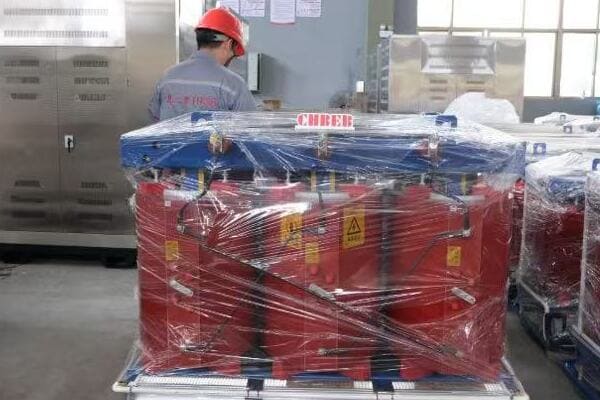
As someone who’s been in the transformer industry for over two decades, I’ve seen firsthand how these factors interplay to determine prices. Let’s dive into the key elements that will shape transformer costs in 2025.
Dry Type Transformer Market Overview 2025: Types and Price Ranges?
Are you wondering what types of dry type transformers will dominate the market in 2025 and how much they’ll cost? This is a common concern for many buyers and project planners.
In 2025, the dry type transformer market will feature cast resin, vacuum pressure impregnated (VPI), and open-wound types. Prices will range from $5,000 to $500,000 depending on capacity, with cast resin types commanding premium prices due to their superior performance and durability.
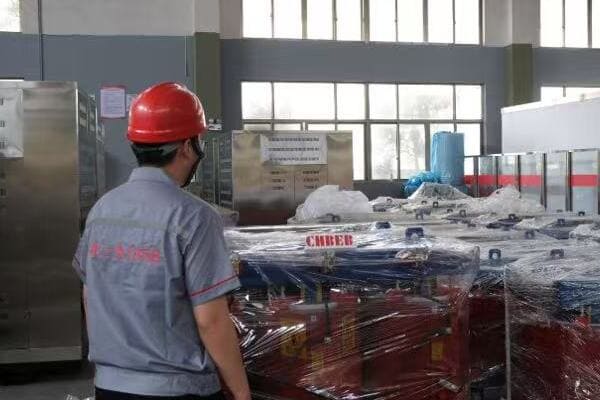
Let me break down the market landscape based on my industry insights:
Cast Resin Transformers: The Premium Choice
Cast resin transformers will continue to lead in high-end applications:
-
Price Range:
- Small (up to 500 kVA): $15,000 – $50,000
- Medium (500 kVA – 2500 kVA): $50,000 – $200,000
- Large (above 2500 kVA): $200,000 – $500,000
-
Key Features:
- Excellent fire resistance
- High short-circuit strength
- Low maintenance requirements
-
Applications:
- High-rise buildings
- Hospitals
- Data centers
I recently worked on a project for a new hospital where we chose a 2000 kVA cast resin transformer. Despite the higher upfront cost of $180,000, the client saw the value in its safety features and low maintenance needs.
Vacuum Pressure Impregnated (VPI) Transformers: The Versatile Option
VPI transformers will offer a balance of performance and cost:
-
Price Range:
- Small (up to 500 kVA): $10,000 – $40,000
- Medium (500 kVA – 2500 kVA): $40,000 – $150,000
- Large (above 2500 kVA): $150,000 – $400,000
-
Key Features:
- Good thermal performance
- Suitable for both indoor and outdoor use
- Cost-effective for medium-range applications
-
Applications:
- Industrial plants
- Commercial buildings
- Renewable energy projects
For a recent solar farm project, we opted for a 1500 kVA VPI transformer priced at $120,000. It offered the right balance of performance and cost for the outdoor setting.
Open-Wound Transformers: The Economic Choice
Open-wound transformers will remain popular for basic applications:
-
Price Range:
- Small (up to 500 kVA): $5,000 – $25,000
- Medium (500 kVA – 1000 kVA): $25,000 – $80,000
- Large (above 1000 kVA): $80,000 – $200,000
-
Key Features:
- Most cost-effective option
- Suitable for clean, dry environments
- Easy maintenance and inspection
-
Applications:
- Small commercial spaces
- Light industrial use
- Temporary installations
I recently advised a small workshop owner who needed a 300 kVA transformer. We went with an open-wound type priced at $18,000, which perfectly met their needs and budget.
Price Comparison Table: Dry Type Transformer Types in 2025
| Transformer Type | Small (≤500 kVA) | Medium (500-2500 kVA) | Large (>2500 kVA) |
|---|---|---|---|
| Cast Resin | $15,000 – $50,000 | $50,000 – $200,000 | $200,000 – $500,000 |
| VPI | $10,000 – $40,000 | $40,000 – $150,000 | $150,000 – $400,000 |
| Open-Wound | $5,000 – $25,000 | $25,000 – $80,000 | $80,000 – $200,000 |
It’s important to note that these price ranges are estimates and can vary based on specific requirements, manufacturer, and market conditions. In my experience, the key to getting the best value is not always choosing the cheapest option, but finding the transformer that best fits your specific needs and operating environment.
For instance, I once worked with a client who initially wanted to go with the cheapest open-wound option for their new office building. After discussing their long-term plans and the potential for expansion, we decided on a slightly more expensive VPI transformer. This decision proved wise when they expanded their operations two years later, as the VPI transformer could handle the increased load without needing a replacement.
Remember, when considering prices, factor in not just the upfront cost but also the total cost of ownership, including energy efficiency, maintenance needs, and expected lifespan. In 2025, I expect we’ll see an even greater emphasis on energy efficiency and smart features, which might increase upfront costs but offer significant savings over the transformer’s lifetime.
Raw Material Trends: Impact on Dry Type Transformer Pricing in 2025?
Are you concerned about how raw material costs will affect transformer prices in 2025? You should be. Raw material trends are one of the most significant factors influencing the cost of dry type transformers.
In 2025, the prices of key raw materials like copper, electrical steel, and insulation materials will significantly impact dry type transformer costs. Fluctuations in these materials can cause price swings of 10-30% in the final product, making it crucial for buyers to understand these trends.

Let me break down the key raw materials and their expected impact on pricing:
Copper: The Conductor Conundrum
Copper is a critical component in transformer windings:
-
Price Trend:
- Expected to rise 15-20% by 2025 due to increased global demand
- Volatility linked to economic factors and green energy initiatives
-
Impact on Transformer Cost:
- Can account for 30-40% of material costs in a dry type transformer
- A 20% increase in copper prices could lead to a 6-8% increase in overall transformer cost
-
Industry Response:
- Some manufacturers exploring aluminum as an alternative
- Advanced winding techniques to optimize copper usage
I recently worked on a project where copper prices surged midway through production. We had to renegotiate contracts with clients, highlighting the importance of price escalation clauses in long-term agreements.
Electrical Steel: The Core Issue
Electrical steel is crucial for the transformer core:
-
Price Trend:
- Projected 10-15% increase by 2025
- Supply chain disruptions and increased demand from EV sector driving prices up
-
Impact on Transformer Cost:
- Represents 20-25% of material costs in dry type transformers
- A 15% rise in electrical steel prices could increase transformer costs by 3-4%
-
Industry Adaptation:
- Research into amorphous metal cores for higher efficiency
- Improved core design to reduce material usage
In a recent large-scale project, we opted for amorphous metal cores despite the higher initial cost. The improved efficiency offset the price difference within three years of operation.
Insulation Materials: The Hidden Cost Driver
Insulation materials are essential for transformer safety and performance:
-
Price Trend:
- Expected 5-10% increase by 2025
- Driven by advancements in material technology and environmental regulations
-
Impact on Transformer Cost:
- Accounts for 10-15% of material costs
- A 10% increase in insulation material prices could lead to a 1-1.5% rise in transformer cost
-
Technological Advancements:
- Development of bio-based insulation materials
- Nano-enhanced insulation for better performance
We recently used a new type of nano-enhanced insulation in a high-performance transformer. While it increased the cost by 2%, it allowed for a more compact design and better thermal performance.
Resin (for Cast Resin Transformers): The Encapsulation Equation
For cast resin transformers, the epoxy resin is a significant cost factor:
-
Price Trend:
- Projected 8-12% increase by 2025
- Influenced by oil prices and chemical industry dynamics
-
Impact on Transformer Cost:
- Can represent 15-20% of material costs in cast resin transformers
- A 10% increase in resin prices could lead to a 1.5-2% rise in overall cost
-
Industry Innovations:
- Research into more environmentally friendly resin formulations
- Improved casting techniques to reduce resin usage
In a recent project for a coastal installation, we used a new type of resin with enhanced moisture resistance. The 5% cost increase was justified by the improved longevity in the harsh environment.
Raw Material Cost Impact Table
| Material | Expected Price Increase by 2025 | Impact on Transformer Cost |
|---|---|---|
| Copper | 15-20% | 6-8% increase |
| Electrical Steel | 10-15% | 3-4% increase |
| Insulation Materials | 5-10% | 1-1.5% increase |
| Resin (Cast Resin Types) | 8-12% | 1.5-2% increase |
These trends underscore the importance of material cost management in transformer pricing. In my experience, successful manufacturers and buyers in 2025 will be those who can navigate these raw material trends effectively.
Strategies I’ve seen work well include:
- Long-term supply agreements to stabilize prices
- Investing in R&D to reduce material dependency or find alternatives
- Implementing lean manufacturing techniques to minimize waste
- Considering total cost of ownership, not just initial material costs
For example, in a recent large-scale procurement, we negotiated a two-year price agreement with suppliers, with limited escalation clauses tied to specific raw material indices. This approach provided price stability for our clients while allowing for fair adjustments based on market conditions.
Remember, while raw material costs are a significant factor, they’re not the only consideration in transformer pricing. The key is to balance material costs with performance, efficiency, and long-term reliability to get the best value for your investment.
Technology and Efficiency: How Innovations are Shaping Costs?
Are you wondering why some new transformer models seem more expensive than older ones? The answer often lies in technological advancements and efficiency improvements.
Innovations in transformer technology, such as advanced core materials, smart monitoring systems, and improved insulation, are influencing costs in 2025. While these innovations may increase upfront prices, they often lead to significant long-term savings through improved efficiency and reduced maintenance needs.
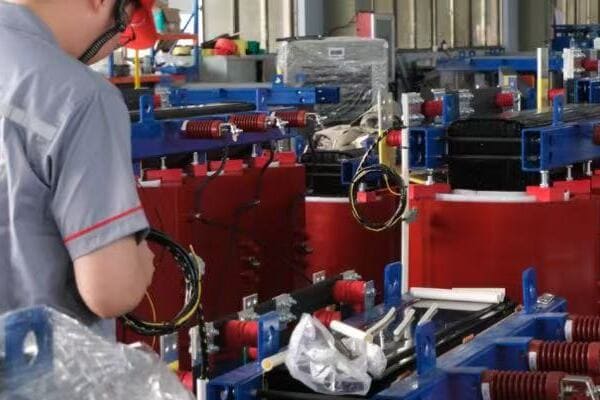
Let me break down how these technological advancements are affecting transformer costs:
Advanced Core Materials: The Efficiency Game-Changer
New core materials are revolutionizing transformer efficiency:
-
Amorphous Metal Cores:
- 20-30% more expensive than traditional silicon steel
- Reduces no-load losses by up to 70%
- Can lead to significant energy savings over transformer lifetime
-
High-Grade Grain-Oriented Electrical Steel:
- 10-15% price premium over standard grades
- Improves overall efficiency by 0.5-1%
- Particularly beneficial for large, high-load transformers
-
Cost Impact:
- Can increase initial transformer cost by 5-10%
- Often results in ROI within 3-5 years through energy savings
I recently worked on a project where we used amorphous metal cores in a substation transformer. The initial cost was 15% higher, but the energy savings are projected to exceed $100,000 over ten years.
Smart Monitoring and Diagnostics
Intelligent systems are becoming standard in modern transformers:
-
IoT Sensors and Monitoring Equipment:
- Adds $5,000-$20,000 to transformer cost, depending on complexity
- Enables real-time monitoring and predictive maintenance
- Can extend transformer life by 10-15% through early issue detection
-
AI-Driven Diagnostic Systems:
- Premium of $10,000-$30,000 for advanced systems
- Predicts potential failures and optimizes performance
- Reduces maintenance costs and downtime significantly
-
Cost-Benefit Analysis:
- Increases initial cost by 3-8% for medium to large transformers
- Can reduce total ownership cost by 10-20% over transformer lifespan
In a recent industrial installation, we implemented an AI-driven monitoring system. Despite the $25,000 additional cost, it prevented a major failure within the first year, saving the client an estimated $200,000 in potential downtime and repairs.
Improved Insulation Technologies
Advancements in insulation are enhancing performance and longevity:
-
Nano-Enhanced Insulation Materials:
- 15-25% more expensive than traditional materials
- Improves thermal performance and extends transformer life
- Allows for more compact designs in some cases
-
Bio-Based Insulation:
- Currently at a 20-30% price premium
- Environmentally friendly and potentially easier to dispose of
- May become more cost-competitive by 2025 as production scales up
-
Impact on Transformer Cost:
- Can increase overall cost by 2-4%
- Often justified by improved performance and longer lifespan
We recently used nano-enhanced insulation in a transformer for a data center. The 3% cost increase was offset by the ability to handle higher loads and reduce cooling needs.
Energy Efficiency Improvements
The push for higher efficiency is driving up initial costs but reducing long-term expenses:
-
High-Efficiency Models (Beyond Standard Requirements):
- 10-20% price premium over standard efficiency models
- Can reduce energy losses by 15-30%
- Particularly important in applications with high utilization rates
-
Advanced Cooling Systems:
- Adds 5-10% to transformer cost
- Improves efficiency and allows for higher power density
- Crucial for compact installations or harsh environments
-
Cost-Efficiency Trade-off:
- Higher upfront costs are typically recovered in 3-7 years through energy savings
- Becoming increasingly important due to rising energy costs and environmental regulations
In a recent project for a large manufacturing plant, we opted for a high-efficiency transformer with an advanced cooling system. The 15% price premium is expected to be recovered in just four years through reduced energy costs.
Technology Impact on Transformer Costs: Comparative Table
| Technology | Initial Cost Increase | Long-Term Benefits | Typical ROI Period |
|---|---|---|---|
| Amorphous Metal Cores | 5-10% | 20-30% energy savings | 3-5 years |
| Smart Monitoring Systems | 3-8% | 10-20% lower total ownership cost | 4-6 years |
| Nano-Enhanced Insulation | 2-4% | Extended lifespan, better performance | 5-8 years |
| High-Efficiency Models | 10-20% | 15-30% energy loss reduction | 3-7 years |
These technological advancements highlight a crucial trend in transformer pricing: the shift from focusing solely on initial cost to considering the total cost of ownership. In my experience, clients who understand this concept make more informed decisions.
For instance, I recently advised a client who was hesitant about the higher upfront cost of a smart monitoring system. By demonstrating how it could prevent costly downtime and extend the transformer’s life, we justified the investment. Two years later, the system detected an early-stage fault, preventing a potential failure that could have cost millions in lost production.
As we look towards 2025, I expect the trend of ‘smart’ and high-efficiency transformers to accelerate. Manufacturers who invest in these technologies may see higher initial prices but will likely gain a competitive edge in the market. For buyers, the key will be to carefully evaluate the long-term benefits against the higher upfront costs.
Remember, while these technological advancements often increase the initial price tag, they can significantly reduce the total cost of ownership over the transformer’s lifetime. As energy costs continue to rise and environmental regulations become stricter, these efficiency improvements will become increasingly valuable.
Market Dynamics and Production Scale: Influences on Pricing Strategies?
Are you puzzled by the sometimes erratic pricing in the transformer market? You’re not alone. Market dynamics and production scale play a crucial role in shaping pricing strategies, often in ways that aren’t immediately obvious.
Transformer pricing in 2025 will be heavily influenced by market demand fluctuations, global competition, and economies of scale in production. These factors can lead to price variations of 10-25% for similar products, making it essential for buyers to understand the broader market context.
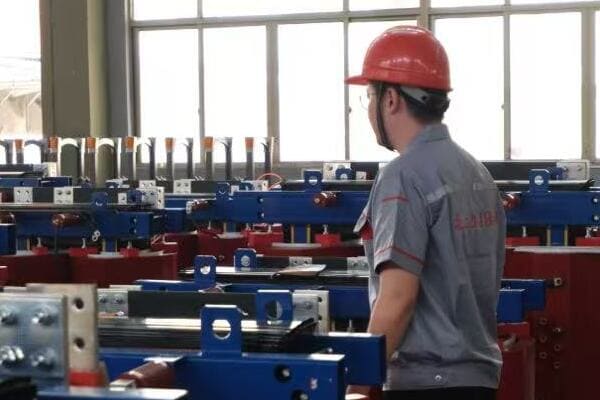
Let me break down how these market forces are likely to impact transformer pricing in 2025:
Demand Fluctuations: The Market Rollercoaster
Demand changes can significantly affect pricing:
-
Industry Growth Sectors:
- Renewable energy projects expected to drive demand up by 15-20%
- Data center expansions could increase specific transformer demand by 10-15%
- These growth areas may see price premiums of 5-10% due to high demand
-
Economic Cycles:
- Economic downturns can lead to 10-20% price drops as demand slackens
- Rapid economic growth periods might see 5-15% price hikes due to supply constraints
-
Regional Variations:
- Emerging markets may see price increases of 10-20% as infrastructure development accelerates
- Mature markets might experience stable or slightly declining prices (-5% to +5%)
I recently worked on a large-scale renewable energy project where transformer prices were 8% higher than initially budgeted due to the booming demand in the sector. We had to adjust our project financials accordingly.
Global Competition: The Price Pressure Cooker
International competition significantly impacts pricing strategies:
-
Emerging Market Manufacturers:
- May offer prices 15-25% lower than established brands
- Often compete on price for standard transformer models
- Quality and reliability concerns can offset the price advantage
-
Established Global Players:
- Typically command a 10-20% price premium
- Compete on quality, reliability, and after-sales service
- May adjust prices to defend market share against lower-cost competitors
-
Trade Policies and Tariffs:
- Can cause price fluctuations of 5-15% depending on import/export regulations
- May lead to regional price disparities for the same products
In a recent procurement project, we compared offers from both emerging market and established manufacturers. While the price difference was significant (about 20%), we ultimately chose a mid-range option that balanced cost with proven reliability.
Economies of Scale: The Volume Game
Production volume significantly influences unit costs and pricing:
-
Large-Scale Production:
- Can reduce unit costs by 10-20% for high-volume standard models
- Allows manufacturers to offer more competitive pricing
- Often leads to better pricing for bulk orders
-
Customization vs. Standardization:
- Customized transformers may cost 20-40% more than standard models
- Standardized designs allow for more efficient production and lower costs
- Trend towards modular designs to balance customization and cost-effectiveness
-
Production Capacity Utilization:
- High utilization (>80%) may lead to price increases of 5-10% due to limited supply
- Low utilization (<60%) can result in aggressive pricing and discounts of 10-15%
I recently negotiated a large order for a utility company. By committing to a three-year supply agreement with standardized specifications, we secured pricing that was 12% lower than the market average.
Market Concentration: The Competitive Landscape
The structure of the transformer market affects pricing dynamics:
-
Oligopolistic Tendencies:
- In some regions, 3-5 major players control 60-70% of the market
- Can lead to price stability but also the risk of coordinated pricing
- New entrants may disrupt pricing with aggressive strategies
-
Niche Market Segments:
- Specialized transformer types may see price premiums of 30-50% due to limited competition
- Examples include ultra-high voltage or specific industry applications
-
Market Consolidation:
- Mergers and acquisitions can lead to short-term price fluctuations of 5-10%
- Long-term effects often include reduced competition and potential price increases
During a recent project in a niche industry, we found that prices for specialized transformers were nearly 40% higher than comparable standard models due to limited supplier options.
Pricing Strategy Comparison Table
| Factor | Potential Price Impact | Market Segment Most Affected |
|---|---|---|
| High Demand in Growth Sectors | +5% to +10% | Renewable Energy, Data Centers |
| Economic Downturn | -10% to -20% | General Industrial |
| Emerging Market Competition | -15% to -25% | Standard Models |
| Large-Scale Production | -10% to -20% | High-Volume Standard Models |
| Customization | +20% to +40% | Specialized Industries |
| Market Consolidation | +5% to +10% (long-term) | All Segments |
Understanding these market dynamics is crucial for both buyers and manufacturers. For buyers, it’s about timing purchases, understanding the broader market context, and leveraging competition. For manufacturers, it’s about balancing production efficiency, market positioning, and pricing strategy.
In my experience, successful navigation of these market forces often involves:
- Long-term supply agreements to stabilize prices
- Diversifying supplier base to mitigate regional risks
- Balancing standardization and customization to optimize costs
- Staying informed about industry trends and economic indicators
Remember, while price is important, it shouldn’t be the only factor in your decision-making process. Quality, reliability, and after-sales support can often justify a higher price point, especially when considering the total cost of ownership over the transformer’s lifespan.
Regulatory Landscape and Customization: Hidden Factors in Cost Determination?
Are you aware of how regulations and customization needs can significantly impact transformer costs? These factors often fly under the radar but can have a substantial effect on pricing.
Regulatory requirements and customization needs can increase dry type transformer costs by 15-30% in 2025. Stricter efficiency standards, environmental regulations, and specific customer requirements all contribute to these hidden costs, making it crucial for buyers to understand their impact.
Let’s dive into how these factors influence transformer pricing:
Regulatory Compliance: The Invisible Cost Driver
Compliance with evolving regulations significantly impacts costs:
-
Energy Efficiency Standards:
- New standards in 2025 may require 5-10% higher efficiency
- Can increase transformer costs by 8-15%
- Example: The EU’s Ecodesign Directive for transformers
-
Environmental Regulations:
- Restrictions on certain materials (e.g., specific insulation types)
- Can lead to 3-7% cost increase for compliant materials
- Example: Regulations on SF6 gas in switchgear associated with transformers
-
Safety Standards:
- Stricter fire safety requirements for indoor installations
- May add 5-10% to costs for enhanced safety features
- Example: IEC 60076-11 for fire behavior of dry-type transformers
I recently worked on a project where new local regulations required higher fire resistance ratings. This unexpected change increased our transformer cost by 12% due to the need for advanced materials and design modifications.
Customization: Tailoring to Specific Needs
Customization often leads to higher costs but can be necessary for optimal performance:
-
Special Voltage Requirements:
- Non-standard voltage ratings can increase costs by 10-20%
- Often needed for specific industrial applications or international projects
- Example: A recent project required a 13.8kV primary, which was non-standard for the region
-
Unique Environmental Conditions:
- Transformers for extreme temperatures or altitudes
- Can add 15-25% to costs for special designs
- Example: We designed a transformer for a high-altitude mining operation, requiring special cooling and insulation
-
Size and Weight Constraints:
- Compact designs for space-limited installations
- May increase costs by 20-30% due to specialized components
- Example: A transformer for a crowded urban substation required a custom, compact design
-
Noise Reduction Requirements:
- Ultra-low noise transformers for sensitive environments
- Can add 10-15% to costs for advanced noise reduction techniques
- Example: A hospital installation required noise levels below 50 dB, necessitating special core and enclosure designs
Industry-Specific Requirements
Different industries often have unique needs that impact costs:
-
Marine and Offshore Applications:
- Corrosion-resistant materials and special certifications required
- Can increase costs by 30-50% compared to standard models
- Example: Transformers for offshore wind farms need to withstand harsh marine environments
-
Renewable Energy Sector:
- Transformers for wind and solar farms with variable load profiles
- May cost 10-20% more due to specialized designs
- Example: Solar farm transformers need to handle rapid load changes and have high efficiency at partial loads
-
Data Centers:
- High efficiency and reliability requirements
- Can add 15-25% to costs for premium components and redundant features
- Example: A recent data center project required transformers with 99.5% efficiency, well above standard levels
Smart Grid Integration
The move towards smart grids is introducing new cost factors:
-
Monitoring and Communication Capabilities:
- Addition of sensors and communication interfaces
- Can increase transformer costs by 5-10%
- Example: Smart transformers with real-time monitoring and remote control capabilities
-
Power Quality Management:
- Features to manage harmonics and power factor
- May add 8-12% to costs for advanced electronic components
- Example: Transformers with active harmonic filtering for industrial applications
Cost Impact Comparison Table
| Factor | Potential Cost Increase | Primary Reason |
|---|---|---|
| Energy Efficiency Standards | 8-15% | Higher grade materials, advanced design |
| Environmental Compliance | 3-7% | Alternative materials, disposal considerations |
| Fire Safety Requirements | 5-10% | Enhanced insulation, containment features |
| Non-Standard Voltages | 10-20% | Custom design and testing |
| Extreme Environment Design | 15-25% | Specialized materials, extensive testing |
| Compact Design | 20-30% | Advanced materials, complex engineering |
| Noise Reduction | 10-15% | Special core materials, enhanced enclosures |
| Marine/Offshore Applications | 30-50% | Corrosion resistance, special certifications |
| Smart Grid Features | 5-10% | Addition of sensors and communication systems |
In my experience, the key to managing these hidden costs is early planning and clear communication. For instance, in a recent data center project, we identified the need for ultra-high efficiency and smart monitoring capabilities early in the planning stage. This allowed us to work with manufacturers to optimize the design and find cost-effective solutions that met all requirements.
It’s important to remember that while these factors can significantly increase upfront costs, they often lead to better performance, longer lifespan, and lower total cost of ownership. For example, a transformer designed for a specific harsh environment might cost 20% more initially but could last twice as long as a standard unit, ultimately providing better value.
When considering these factors, I always advise clients to:
- Clearly define all requirements at the project outset
- Engage with manufacturers early to discuss custom needs
- Consider long-term benefits alongside initial costs
- Stay informed about upcoming regulatory changes
Remember, the cheapest transformer is not always the most cost-effective in the long run. Understanding these hidden factors in cost determination can help you make more informed decisions and potentially save significant amounts over the lifecycle of your transformer.
Conclusion
The cost of dry type transformers in 2025 will be influenced by various factors including raw material trends, technological advancements, market dynamics, regulatory requirements, and customization needs. Understanding these elements is crucial for making informed decisions in transformer procurement and budget planning.
Are you struggling to find the right electronic transformer manufacturer for your project? You’re not alone. Many engineers and procurement specialists face this challenge daily.
Choosing the best electronic transformer manufacturer involves evaluating their expertise, production capabilities, quality control, customization options, and after-sales support. It’s crucial to consider factors like the manufacturer’s experience in your specific application, their adherence to industry standards, and their ability to meet your project’s unique requirements.
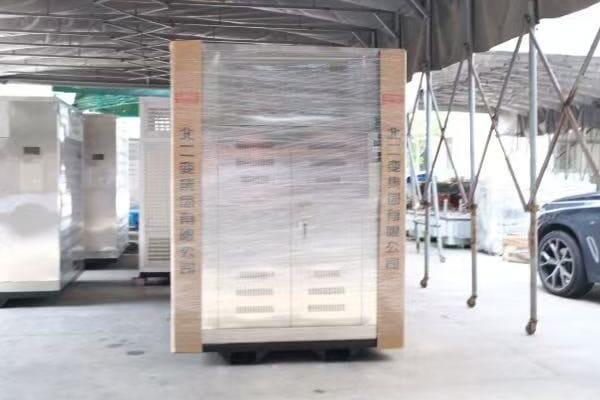
In my years of experience in the power industry, I’ve learned that selecting the right manufacturer can make or break a project. Let’s dive into the key aspects you need to consider to make an informed decision.
Understanding Electronic Transformers: Types and Applications in Modern Electronics?
Have you ever wondered about the invisible components that power our electronic world? Electronic transformers are the unsung heroes behind many of our devices, but their diversity can be overwhelming.
Electronic transformers come in various types, including power transformers, audio transformers, and RF transformers. Each type serves specific applications in modern electronics, from powering your smartphone to enabling wireless communication in IoT devices.
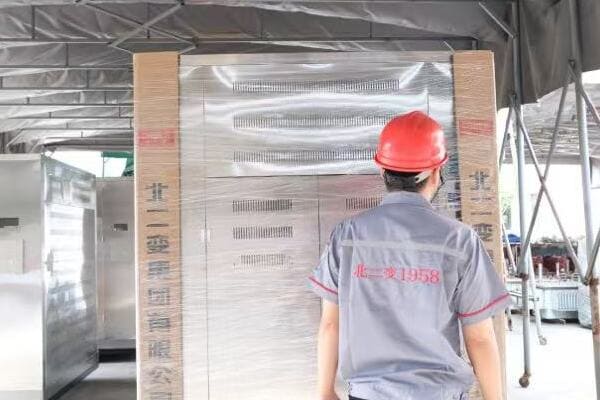
Let me break down the main types of electronic transformers and their applications, based on my experience in the field:
Power Transformers: The Backbone of Electronic Devices
Power transformers are the workhorses of electronic devices. They convert high voltage to low voltage, making them essential in:
- Household appliances like TVs and computers
- Industrial equipment
- Power supplies for various electronic devices
I once worked on a project for a smart home system where compact power transformers were crucial. We needed a manufacturer who could provide efficient, small-form-factor transformers that could fit into sleek wall-mounted devices.
Audio Transformers: Enhancing Sound Quality
Audio transformers play a vital role in sound systems. They’re used in:
- High-fidelity audio equipment
- Professional sound systems
- Guitar amplifiers and other musical instruments
During my time consulting for a boutique audio equipment company, I learned the importance of choosing a manufacturer with expertise in audio transformers. The right transformer can make the difference between mediocre and exceptional sound quality.
RF Transformers: Enabling Wireless Communication
RF (Radio Frequency) transformers are critical in our increasingly wireless world. They’re found in:
- Smartphones and tablets
- Wi-Fi routers
- Satellite communication systems
In a recent project for a 5G infrastructure rollout, selecting a manufacturer with cutting-edge RF transformer technology was crucial for achieving the required signal quality and range.
Comparison of Electronic Transformer Types
| Type | Primary Function | Common Applications | Key Considerations |
|---|---|---|---|
| Power | Voltage conversion | Home appliances, industrial equipment | Efficiency, size, heat dissipation |
| Audio | Signal isolation and impedance matching | Hi-fi systems, musical equipment | Frequency response, distortion levels |
| RF | Impedance matching in high-frequency circuits | Wireless devices, communication systems | Bandwidth, insertion loss |
Understanding these different types and their applications is crucial when selecting a manufacturer. A company that excels in power transformers might not be the best choice for a project requiring high-performance RF transformers.
In my experience, the best approach is to look for manufacturers who specialize in the type of transformer you need. For instance, when I was working on a project for a new line of smart speakers, we chose a manufacturer known for their expertise in both power and audio transformers. This decision led to a product with both efficient power management and superior sound quality.
Remember, the right manufacturer should not only understand the technical aspects of the transformer you need but also grasp how it fits into your overall product design and functionality.
Key Factors to Consider When Evaluating Electronic Transformer Manufacturers?
Are you feeling overwhelmed by the number of electronic transformer manufacturers out there? It’s a common challenge, but knowing what to look for can make all the difference.
When evaluating electronic transformer manufacturers, focus on their industry experience, technical expertise, production capabilities, quality control processes, and customer service. These factors are crucial in ensuring you get a reliable product that meets your specific needs.

From my years in the industry, I’ve learned that choosing the right manufacturer involves more than just comparing prices. Let’s explore the key factors you should consider:
Industry Experience and Reputation
A manufacturer’s track record speaks volumes. Look for:
- Years in business
- Client testimonials and case studies
- Industry recognition and awards
I once worked with a startup that chose a new manufacturer based solely on price. The result? Delays and quality issues that could have been avoided with a more established partner.
Technical Expertise and Innovation
The best manufacturers are those that stay ahead of the curve. Consider:
- R&D investments
- Patents and proprietary technologies
- Participation in industry standards development
During a project for a renewable energy system, we partnered with a manufacturer known for their innovative approach to transformer design. Their expertise in high-efficiency transformers significantly improved our system’s overall performance.
Production Capabilities
Ensure the manufacturer can meet your volume and timeline requirements:
- Production capacity
- Flexibility in production scheduling
- Ability to scale production up or down
I’ve seen projects delayed because the chosen manufacturer couldn’t ramp up production to meet unexpected demand. It’s crucial to discuss potential volume changes upfront.
Quality Control Processes
Quality should never be compromised. Look for:
- ISO certifications
- In-house testing facilities
- Documented quality control procedures
On a critical aerospace project, our team selected a manufacturer with rigorous quality control processes. Their attention to detail ensured our transformers met the stringent requirements of the aerospace industry.
Customer Service and Support
Good support can make your project run smoothly:
- Responsive communication
- Technical support availability
- Flexibility in addressing issues
I once worked with a manufacturer who provided exceptional support during a complex custom transformer design. Their willingness to collaborate closely with our team was invaluable.
Comparison of Manufacturer Evaluation Factors
| Factor | Why It’s Important | What to Look For |
|---|---|---|
| Experience | Indicates reliability and expertise | Years in business, successful projects |
| Innovation | Ensures access to latest technologies | R&D investments, patents |
| Production | Meets your project needs | Capacity, flexibility, scalability |
| Quality Control | Guarantees product reliability | Certifications, testing procedures |
| Customer Support | Facilitates smooth project execution | Responsiveness, technical expertise |
In my experience, the best approach is to create a weighted scorecard based on these factors. For instance, in a recent project for a medical device, we prioritized quality control and technical expertise over production volume, given the critical nature of the application.
Remember, the right manufacturer should feel like a partner in your project, not just a supplier. They should be willing to understand your specific needs and work with you to find the best solutions.
Quality Assurance and Production Capabilities: Ensuring Reliability in Your Transformer Choice?
Have you ever wondered why some electronic transformers last for years while others fail prematurely? The answer often lies in the quality assurance and production capabilities of the manufacturer.
Quality assurance in electronic transformer manufacturing involves rigorous testing, adherence to international standards, and consistent production processes. A manufacturer’s production capabilities, including their equipment, workforce skills, and capacity, directly impact the reliability and consistency of their transformers.
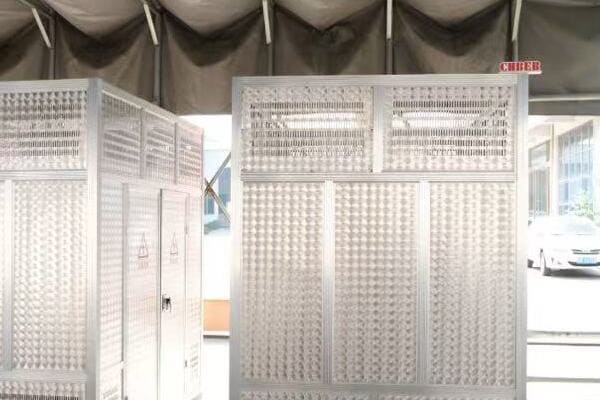
In my years overseeing various electronic projects, I’ve learned that the quality and reliability of transformers can make or break a product. Let’s delve into what you should look for:
Quality Assurance Processes
A robust quality assurance system is crucial. Key elements include:
- Incoming Material Inspection: Ensuring raw materials meet specifications
- In-Process Quality Checks: Monitoring quality at each production stage
- Final Product Testing: Comprehensive testing of finished transformers
I once visited a manufacturer who allowed me to observe their quality control process. Their attention to detail, from core assembly to final testing, was impressive and reflected in the consistently high quality of their products.
Adherence to International Standards
Look for manufacturers who comply with relevant standards:
- ISO 9001 for quality management systems
- Industry-specific standards (e.g., UL for safety, IEEE for performance)
- Environmental standards like RoHS and REACH
In a project for a global electronics brand, we chose a manufacturer certified to multiple international standards. This ensured our transformers met regulatory requirements in various markets, simplifying our global product launch.
Production Capabilities
Assess the manufacturer’s ability to meet your needs:
- Manufacturing Equipment: State-of-the-art machinery for precision and efficiency
- Production Capacity: Ability to handle your volume requirements
- Flexibility: Capability to adjust production for varying demands
During a large-scale industrial project, our chosen manufacturer’s advanced winding machines and automated testing equipment ensured consistent quality across a high-volume order.
Workforce Expertise
The skill of the workforce is as important as the equipment:
- Training Programs: Ongoing skill development for workers
- Experience Levels: A mix of seasoned experts and fresh talent
- Quality Culture: A workforce committed to quality at every level
I’ve found that manufacturers with strong training programs and a culture of quality tend to produce more reliable transformers consistently.
Comparison of Quality Assurance and Production Factors
| Factor | Impact on Reliability | What to Look For |
|---|---|---|
| Quality Processes | Ensures consistent product quality | Comprehensive testing, documented procedures |
| Standards Compliance | Meets regulatory and performance requirements | Relevant certifications, test reports |
| Production Equipment | Affects precision and consistency | Modern machinery, maintenance records |
| Workforce Skills | Influences product quality and innovation | Training programs, employee retention rates |
In my experience, it’s crucial to visit the manufacturer’s facility if possible. During one such visit, I noticed how a manufacturer’s organized production floor and engaged workforce translated into superior product quality.
Remember, a manufacturer with strong quality assurance and production capabilities is more likely to deliver transformers that meet your specifications consistently. This reliability can save you time and money in the long run by reducing failures and warranty claims.
Custom vs. Standard Transformers: Navigating Options with Manufacturers?
Are you torn between choosing a standard transformer or opting for a custom solution? This decision can significantly impact your project’s success and cost-effectiveness.
Manufacturers offer both standard and custom electronic transformers. Standard transformers are cost-effective and readily available, suitable for common applications. Custom transformers are tailored to specific requirements, ideal for unique or high-performance needs, but often come with higher costs and longer lead times.
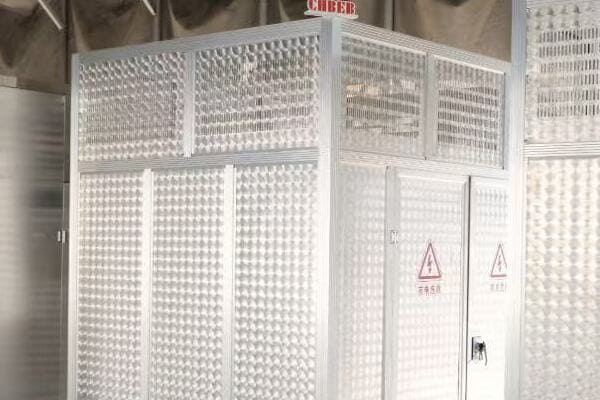
Throughout my career, I’ve faced this decision many times. Let me share insights to help you navigate this choice:
Understanding Standard Transformers
Standard transformers are off-the-shelf solutions:
- Cost-Effective: Mass production reduces costs
- Quick Availability: Often in stock or with short lead times
- Proven Reliability: Extensively tested and refined designs
In a recent project for a consumer electronics product, we chose standard transformers. The high volume and tight timeline made them the perfect fit, saving both time and money.
Exploring Custom Transformers
Custom transformers are tailored to specific needs:
- Optimized Performance: Designed for your exact requirements
- Unique Specifications: Can meet non-standard voltage, size, or environmental needs
- Intellectual Property Protection: Exclusive designs for proprietary technology
For a specialized medical device project, we opted for custom transformers. The unique power requirements and space constraints necessitated a tailored solution.
Factors to Consider in Your Decision
When choosing between custom and standard, consider:
- Application Requirements: How specific are your needs?
- Budget Constraints: Custom solutions often cost more initially
- Time to Market: Standard options can speed up your project timeline
- Production Volume: Custom may be more cost-effective for high volumes
Working with Manufacturers
Engage with manufacturers to explore your options:
- Discuss Your Needs: Clearly communicate your requirements
- Ask for Recommendations: Experienced manufacturers can guide you to the best solution
- Consider Modifications: Some manufacturers offer modified standard transformers as a middle ground
I once worked with a manufacturer who suggested a modified standard transformer for an automotive project. This approach gave us the performance we needed without the full cost of a custom design.
Comparison of Custom vs. Standard Transformers
| Aspect | Standard Transformers | Custom Transformers |
|---|---|---|
| Cost | Generally lower | Higher, especially for low volumes |
| Lead Time | Shorter | Longer due to design and testing |
| Performance | Good for common applications | Optimized for specific needs |
| Flexibility | Limited to available specifications | Highly flexible design |
| Minimum Order Quantity | Often lower | Usually higher |
In my experience, the best approach is to start by thoroughly evaluating standard options. I’ve found that in many cases, a standard transformer or a slightly modified version can meet project needs effectively.
For instance, in an IoT device project, we initially considered a custom transformer. However, after consulting with the manufacturer, we discovered a standard model that met 90% of our requirements. With minor modifications, it perfectly fit our needs, saving both time and development costs.
Remember, a good manufacturer should be able to guide you through this decision process. They should help you weigh the trade-offs between performance, cost, and time to market. Don’t hesitate to ask for samples or prototypes to test in your application before making a final decision.
Beyond the Product: Assessing Technical Support, After-Sales Service, and Innovation in Transformer Manufacturing?
Have you ever considered that choosing a transformer manufacturer is about more than just the product itself? The support and innovation behind the transformer can be just as crucial to your project’s success.
When selecting an electronic transformer manufacturer, consider their technical support, after-sales service, and commitment to innovation. These factors ensure you receive ongoing assistance, prompt problem resolution, and access to cutting-edge technology, all of which can significantly impact your project’s long-term success.

In my years working with various manufacturers, I’ve learned that these aspects can make a huge difference. Let’s explore why they’re so important:
Technical Support: Your Partner in Problem-Solving
Good technical support can be a lifesaver. Look for:
- Responsive Communication: Quick replies to your queries
- Expertise: Support staff with deep technical knowledge
- Design Assistance: Help in selecting or customizing the right transformer
I once worked on a project where we encountered unexpected interference issues. The manufacturer’s technical team worked tirelessly with us, even adjusting the transformer design to solve the problem. This level of support was invaluable.
After-Sales Service: Ensuring Long-Term Success
After-sales service is crucial for ongoing operations:
- Warranty Support: Clear policies and efficient handling of claims
- Spare Parts Availability: Easy access to replacements when needed
- Troubleshooting Assistance: Help in diagnosing and resolving issues
In a large industrial installation, our chosen manufacturer provided exceptional after-sales support. When a transformer failed unexpectedly, they not only replaced it quickly but also helped us identify and correct the underlying issue in our system design.
Innovation: Staying Ahead of the Curve
A manufacturer’s commitment to innovation can benefit your projects:
- R&D Investments: Ongoing research for improved products
- New Technologies: Access to the latest in transformer design
- Custom Solutions: Ability to develop innovative solutions for unique challenges
We once partnered with a manufacturer known for their innovative approach. Their newly developed high-frequency transformer technology allowed us to significantly reduce the size of our portable medical device, giving us a competitive edge in the market.
Evaluating These Aspects
When assessing a manufacturer, consider:
- Asking for case studies or references related to support and innovation
- Inquiring about their R&D budget and recent technological advancements
- Testing their technical support with some challenging questions
Comparison of Support and Innovation Factors
| Aspect | Why It’s Important | What to Look For |
|---|---|---|
| Technical Support | Ensures smooth project implementation | Response time, expertise level |
| After-Sales Service | Guarantees long-term reliability | Warranty terms, spare parts availability |
| Innovation | Provides access to cutting-edge solutions | R&D investments, new product launches |
In my experience, these factors can significantly impact your project’s success. For instance, during a complex industrial automation project, we chose a manufacturer not just for their product quality, but for their exceptional technical support and innovative approach. This decision paid off when we faced an unexpected challenge:
Our system was experiencing intermittent failures that were difficult to diagnose. The manufacturer’s technical team not only helped us troubleshoot the issue but also suggested an innovative solution using their latest transformer technology. This not only solved our immediate problem but also improved the overall efficiency of our system.
The Value of Long-Term Partnerships
When you find a manufacturer that excels in these areas, consider building a long-term partnership:
- Collaborative Development: Work together on future projects
- Early Access to New Technologies: Be among the first to benefit from innovations
- Customized Support: Develop a support system tailored to your needs
I’ve maintained a relationship with a particular manufacturer for over a decade. This partnership has given us priority access to their latest innovations and customized support that understands our unique needs.
Balancing Cost with Value
While it’s tempting to focus solely on the upfront cost of transformers, consider the long-term value:
- Reduced Downtime: Prompt support minimizes operational disruptions
- Improved Performance: Access to innovative solutions enhances your products
- Lower Total Cost of Ownership: Reliable products and good support reduce long-term costs
In a recent project, we opted for a slightly more expensive manufacturer known for their excellent support and innovation. This decision ultimately saved us money by reducing downtime and improving our product’s performance.
Tips for Assessing Support and Innovation
- Request a Technical Consultation: Engage with their support team before making a decision
- Ask About Recent Innovations: Inquire about new products or technologies they’ve developed
- Check Their Training and Resources: Look for manufacturers who offer ongoing education and resources
Remember, the best manufacturer for your project is one that sees themselves as your partner in success, not just a supplier. They should be invested in understanding your challenges and helping you overcome them, both now and in the future.
Conclusion
Choosing the right electronic transformer manufacturer is crucial for project success. Consider their expertise, production capabilities, quality control, customization options, technical support, after-sales service, and innovation. The best choice balances all these factors to meet your specific needs.
Have you ever wondered how the electricity from power plants safely reaches your phone charger? The secret lies in a device called a transformer, and today we’re exploring a special kind: the dry type transformer.
A dry type transformer is like a language translator for electricity. It changes the voltage of electricity without using oil for cooling, unlike its oil-filled cousins. This makes it safer, cleaner, and perfect for use in buildings where we live and work.

As someone who’s spent years working with these electrical ‘translators’, let me take you on a journey to understand why dry type transformers are the unsung heroes of our electrified world.
Dry vs. Oil-Filled: Understanding the Fundamental Differences in Transformer Design?
Imagine you have two translators: one carries a big bottle of water to stay cool, while the other uses a fan. That’s the basic difference between oil-filled and dry type transformers.
Dry type transformers use air or special materials for cooling, while oil-filled types swim in oil. This key difference makes dry types safer for indoor use, like in hospitals or high-rise buildings, where oil leaks could be disastrous.
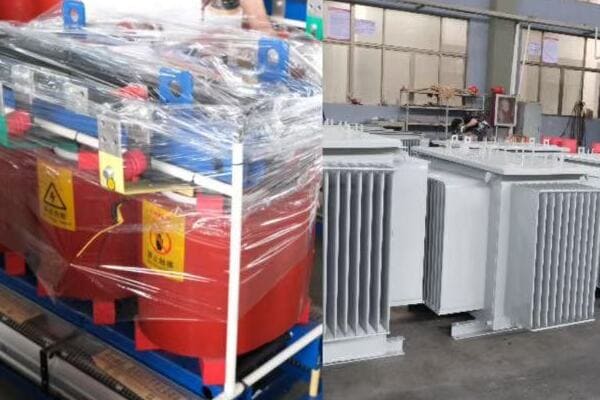
Let’s break down the main differences:
-
Cooling Method:
- Dry Type: Uses air, like your laptop’s cooling fan.
- Oil-Filled: Uses oil, like a car’s engine cooling system.
-
Safety:
- Dry Type: Lower fire risk, like using an electric stove.
- Oil-Filled: Higher fire risk, more like a gas stove.
-
Environmental Impact:
- Dry Type: No risk of oil spills, like using a reusable water bottle.
- Oil-Filled: Potential for oil leaks, like carrying a disposable water bottle that might leak.
-
Size and Weight:
- Dry Type: Usually bigger but lighter, like a large cardboard box.
- Oil-Filled: More compact but heavier, like a small metal safe.
-
Maintenance:
- Dry Type: Easier to maintain, like an electric car.
- Oil-Filled: Requires oil checks and changes, more like a traditional car.
In my work, I’ve seen how crucial these differences can be. For example, when designing the power system for a new hospital, we chose dry type transformers. Why? Because in a place where safety is paramount, the last thing you want is a potential oil fire near sensitive medical equipment.
The Inner Workings of Dry Type Transformers: Materials, Structure, and Cooling Methods?
Ever wondered what’s inside these electrical wizards? Let’s peek under the hood of a dry type transformer.
Dry type transformers are built with special metals and insulating materials that can handle high temperatures without oil. They use clever designs to keep cool, much like how your body sweats to cool down.
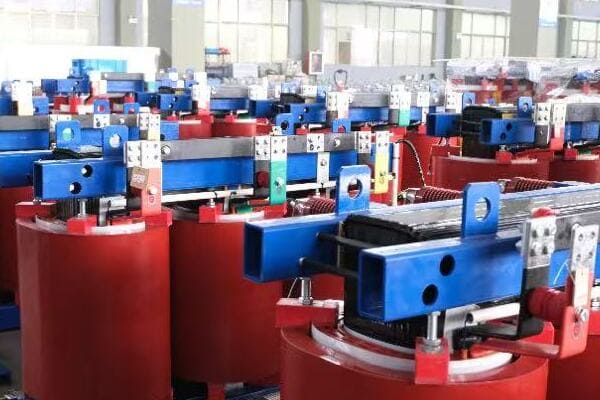
Here’s a simple breakdown of what’s inside:
-
The Core:
- Think of this as the transformer’s heart. It’s usually made of thin sheets of silicon steel.
- Why silicon steel? It’s like using a good conductor for sound in headphones – it helps the transformer work efficiently.
-
The Windings:
- These are like the transformer’s muscles. They’re usually made of copper or aluminum.
- They’re wrapped in special insulating materials, kind of like how you wrap a gift – it keeps everything safe and separate.
-
Cooling System:
- This is how the transformer stays cool without oil. It’s either:
a) Natural Air Cooling: Like opening windows in your house.
b) Forced Air Cooling: More like using electric fans.
- This is how the transformer stays cool without oil. It’s either:
In one project, we installed a dry type transformer in a data center. The client was amazed at how such a powerful device could operate without any liquid cooling. It’s all in the clever use of materials and design!
Safety First: Environmental and Fire Protection Advantages of Dry Type Transformers?
Why are dry type transformers often called the safer choice? Let’s explore.
Dry type transformers are like the electric cars of the transformer world – cleaner, safer, and more environmentally friendly. They don’t use oil, which means no risk of oil fires or spills.

Here’s why they’re considered safer:
-
Fire Safety:
- No oil means lower fire risk. It’s like choosing an LED light bulb over a candle.
- They’re often used in buildings where fire safety is crucial, like schools or hospitals.
-
Environmental Protection:
- No oil means no risk of oil leaks. It’s like using a digital camera instead of film – no chemicals to worry about.
- Easier to dispose of at the end of their life, like recycling an old phone.
-
Indoor Use:
- Safe to use indoors, even in sensitive areas. It’s like being able to bring your electric heater into any room without worry.
I once worked on a project for a green building. The architects were thrilled when we suggested dry type transformers – it helped them achieve their eco-friendly goals without compromising on power needs.
Application Scenarios: Where Dry Type Transformers Shine Brightest?
Where would you find these oil-free electrical heroes? Let’s explore.
Dry type transformers are the go-to choice for indoor and sensitive environments. You’ll find them in skyscrapers, hospitals, schools, and even on ships. They’re perfect where safety and cleanliness are top priorities.
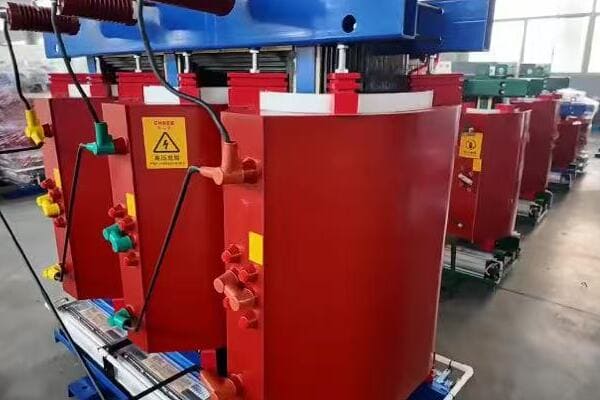
Here are some common places you might find them:
-
High-Rise Buildings:
- Used because they’re safer and don’t need special oil containment areas.
- It’s like choosing a safer, more compact heating system for an apartment building.
-
Hospitals:
- Critical for providing clean, reliable power to sensitive medical equipment.
- Think of it as using a surge protector for life-saving machines.
-
Industrial Facilities:
- Used in areas where oil leaks could be dangerous or disruptive to production.
- It’s like using electric forklifts instead of gas-powered ones in a warehouse.
-
Renewable Energy Projects:
- Often used in wind turbines or solar farms.
- They’re like the eco-friendly batteries for green energy systems.
In my career, I’ve installed dry type transformers in some interesting places. Once, we put one on a cruise ship. The ship’s engineers loved it because it was safer and took up less space than a traditional oil-filled transformer.
Maintenance and Longevity: Caring for Your Dry Type Transformer?
How do you keep a dry type transformer happy and healthy? Let’s find out.
Dry type transformers are like low-maintenance pets. They need regular check-ups but not daily care. With proper attention, they can serve reliably for decades.
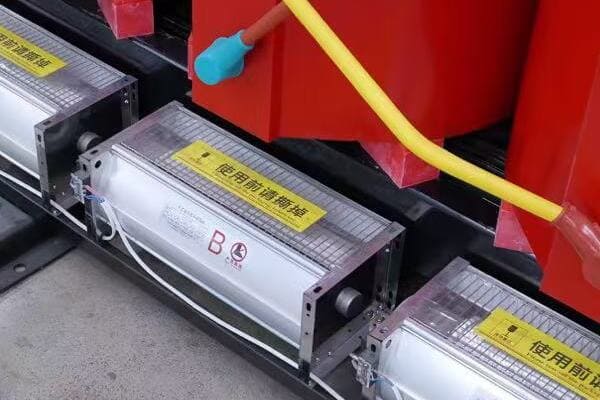
Here’s how to care for your dry type transformer:
-
Regular Inspections:
- Look for dust or debris. It’s like dusting your bookshelves – it keeps everything running smoothly.
- Check for any unusual sounds or smells. It’s like listening to your car engine for odd noises.
-
Cleaning:
- Keep air vents clear. Think of it as cleaning the filter in your air conditioner.
- Use dry cleaning methods. It’s like using a dry cloth to clean your TV screen.
-
Environmental Control:
- Maintain proper ventilation. It’s like ensuring your computer has enough airflow to prevent overheating.
- Control humidity if possible. Think of it as using a dehumidifier in a damp basement.
-
Electrical Testing:
- Periodic tests to check insulation. It’s like getting a health check-up for your transformer.
I once worked with a client who had a 30-year-old dry type transformer still in perfect working condition. The secret? Consistent, thorough maintenance over the years.
Conclusion
Dry type transformers are the unsung heroes of our electrical world. They’re safer, cleaner, and perfect for indoor use. From hospitals to high-rises, these oil-free marvels keep our power flowing safely and efficiently. Remember, the next time you plug in your phone or turn on a light in a big building, a dry type transformer might be working silently to make it happen!
Have you ever wondered how electricity from power plants safely reaches your home? The answer lies in a crucial device: the electric transformer. Without it, our modern electrical grid wouldn’t exist.
An electric transformer is a device that changes the voltage of electricity. It works by using electromagnetic induction to transfer energy between two or more circuits. Transformers are essential for efficient power transmission and safe electricity use in our homes and businesses.
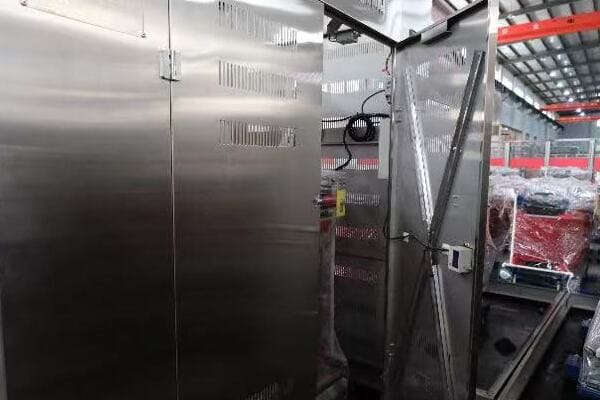
As someone who has worked in the power industry for years, I’ve seen firsthand how transformers shape our electrical systems. Let’s dive deeper into the world of electric transformers and explore their fascinating journey from power plants to your doorstep.
The Basics of Electric Transformers: Your Guide to Power Conversion?
Imagine trying to drink from a fire hose. That’s what using electricity straight from a power plant would be like. Transformers are the devices that make electricity usable for us.
Electric transformers convert power by changing voltage levels while maintaining the same frequency. They use electromagnetic induction to step voltage up for efficient long-distance transmission or step it down for safe local use, all while preserving the overall power.
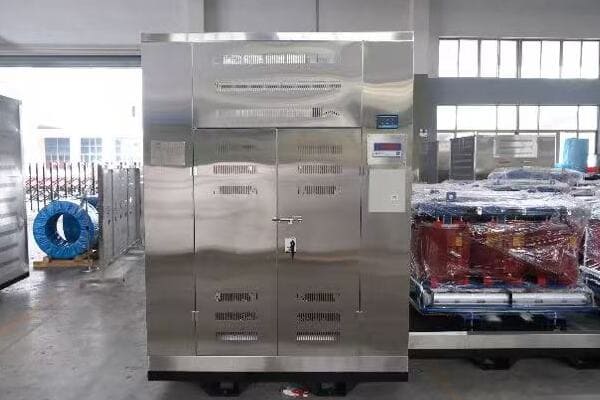
Let me explain how this power conversion process works, drawing from my experience in the field.
The Core Components of a Transformer
A transformer consists of three main parts:
- Primary Coil: This is where the input voltage is applied.
- Secondary Coil: This is where the transformed voltage is output.
- Iron Core: This helps to concentrate and direct the magnetic field between the coils.
The Principle of Electromagnetic Induction
The key to a transformer’s operation is electromagnetic induction. Here’s how it works in a transformer:
- When an alternating current flows through the primary coil, it creates a changing magnetic field.
- This changing magnetic field is concentrated and directed by the iron core.
- The changing magnetic field then induces an alternating voltage in the secondary coil.
The Transformer Equation
The relationship between the number of turns in each coil and the voltages is given by the transformer equation:
(Vs / Vp) = (Ns / Np)
Where:
- Vs = Secondary Voltage
- Vp = Primary Voltage
- Ns = Number of turns in the Secondary Coil
- Np = Number of turns in the Primary Coil
This means that if we want to step up the voltage, we need more turns in the secondary coil than in the primary. Conversely, to step down the voltage, we need fewer turns in the secondary coil.
Types of Power Conversion
Transformers can convert power in two main ways:
| Type | Voltage Change | Current Change | Application |
|---|---|---|---|
| Step-Up | Increases | Decreases | Power plants to transmission lines |
| Step-Down | Decreases | Increases | Substations to homes |
In my work designing power systems, I’ve seen how crucial this power conversion is. It’s this ability that allows us to have a flexible and efficient electrical grid, capable of delivering power from distant plants to our homes safely and efficiently.
From Megawatts to Milliwatts: Transformers in Power Generation and Transmission?
Have you ever wondered how the massive amount of power generated at a plant becomes the safe, usable electricity in your home? The secret lies in a series of transformers along the way.
Transformers play a crucial role in power generation and transmission. At power plants, step-up transformers increase voltage for efficient long-distance transmission. Along the transmission lines, various transformers maintain and adjust voltage levels. This process ensures power reaches its destination with minimal losses.
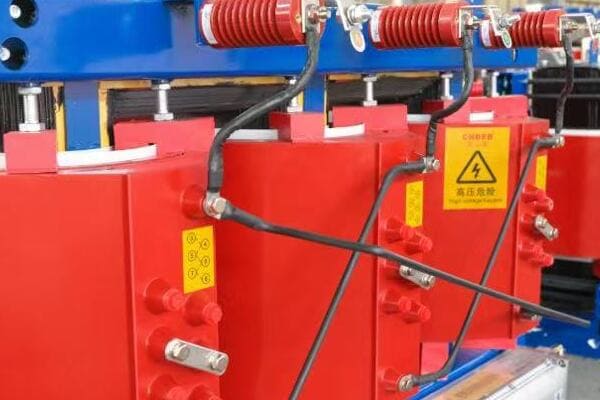
Let me take you on a journey of how electricity travels from power plants to your city, based on my years of experience in the field.
Step 1: Power Generation and Step-Up
The journey begins at power plants:
- Generation: Electricity is typically generated at 11,000 to 25,000 volts.
- Step-Up Transformer: Increases voltage to 155,000 to 765,000 volts for transmission.
- Purpose: Higher voltage reduces power losses over long distances.
Step 2: High-Voltage Transmission
Once the voltage is stepped up, the power enters the transmission phase:
- Transmission Lines: Carry electricity over long distances.
- Substations: Use transformers to adjust voltage between different transmission lines.
- HVDC Converters: Special transformers for High Voltage Direct Current transmission.
Step 3: Sub-Transmission
Before reaching local distribution, power goes through a sub-transmission stage:
- Sub-Transmission Lines: Typically 33,000 to 155,000 volts.
- Substations: Step down voltage for distribution networks.
Transformer Types in Power Generation and Transmission
Let’s look at the types of transformers used in this process:
| Stage | Transformer Type | Voltage Change | Purpose |
|---|---|---|---|
| Generation | Step-Up | 25kV to 765kV | Enable long-distance transmission |
| Transmission | Various | 155kV to 765kV | Efficient power transfer |
| Sub-Transmission | Step-Down | 765kV to 33kV | Prepare for distribution |
In my work across these stages, I’ve encountered various challenges:
- Efficiency: We’re constantly working to reduce losses at each stage.
- Reliability: Transformers must operate continuously for years.
- Environmental Concerns: We’re developing eco-friendly designs and materials.
- Smart Grid Integration: Modern transformers often include monitoring and communication capabilities.
Understanding this journey helps us appreciate the complex system that brings electricity from power plants to our cities. Transformers are the unsung heroes at every stage, ensuring that the power we generate can be efficiently transmitted across vast distances.
The Neighborhood Power Hub: Distribution Transformers and Local Grids?
Have you ever noticed those cylindrical objects on utility poles or those green boxes in your neighborhood? These are distribution transformers, the final step in bringing power to your home.
Distribution transformers are crucial in local power grids. They step down the voltage from distribution lines (typically 4,000 to 33,000 volts) to levels safe for use in homes and businesses (120/240 volts). These transformers ensure efficient and safe power delivery to end-users.
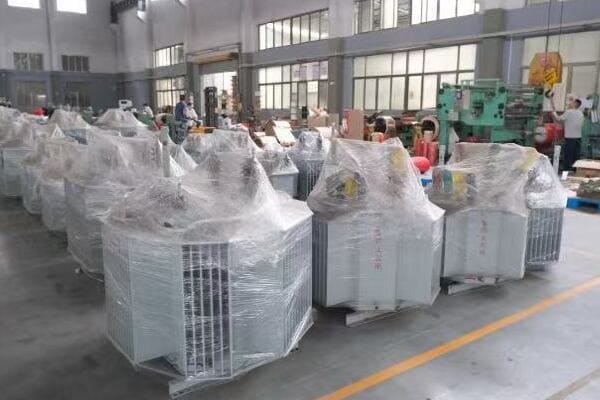
As someone who has worked extensively with local power grids, let me explain how these neighborhood power hubs work.
The Role of Distribution Transformers
Distribution transformers serve several key functions:
- Voltage Step-Down: They reduce voltage to levels safe for household use.
- Isolation: They provide electrical isolation between the distribution system and consumers.
- Load Management: They help balance the load across the local grid.
Types of Distribution Transformers
There are two main types of distribution transformers:
-
Pole-Mounted Transformers:
- Mounted on utility poles
- Typically serve a few houses
- Power capacity: 5 to 100 kVA
-
Pad-Mounted Transformers:
- Installed on ground-level concrete pads
- Often used in underground distribution systems
- Power capacity: 75 to 5000 kVA
The Local Grid Structure
The local grid is structured to efficiently deliver power to homes and businesses:
- Primary Distribution Lines: Carry 4,000 to 33,000 volts
- Distribution Transformers: Step down voltage to 120/240 volts
- Secondary Distribution Lines: Carry power from transformers to buildings
- Service Drop: The final connection to individual buildings
Challenges in Local Power Distribution
In my work with local grids, I’ve encountered several challenges:
- Load Balancing: Ensuring even distribution of power across transformers
- Maintenance: Regular inspection and maintenance of numerous transformers
- Upgrades: Replacing old transformers to meet increasing power demands
- Smart Grid Integration: Incorporating modern monitoring and control systems
Comparison: Pole-Mounted vs. Pad-Mounted Transformers
| Aspect | Pole-Mounted | Pad-Mounted |
|---|---|---|
| Location | On utility poles | Ground level |
| Capacity | 5-100 kVA | 75-5000 kVA |
| Cost | Lower initial cost | Higher initial cost |
| Maintenance | Easier access | More secure |
| Aesthetics | More visible | Less visible |
Understanding the role of distribution transformers in local grids is crucial for appreciating how electricity reaches our homes safely and efficiently. These devices are the final step in a long journey from power plants to our doorsteps, ensuring that we have the right voltage for our daily needs.
Transformers at Home: How They Power Your Everyday Devices?
Have you ever stopped to think about how many transformers you encounter in a day? From the moment you wake up to when you go to sleep, transformers are working behind the scenes to power your life.
Transformers in homes and everyday devices convert standard outlet voltage to the specific voltages needed by various appliances and electronics. They ensure safe and efficient operation of everything from your smartphone charger to your refrigerator, playing a crucial role in our daily lives.
Let me take you on a tour of the transformers in our daily lives, based on my years of experience in the power industry.
Common Household Transformers
Many of our home appliances and devices use transformers:
- Smartphone and Laptop Chargers: Convert 120V AC to low-voltage DC
- Doorbell Transformers: Reduce 120V to 16V for doorbell operation
- HVAC Systems: Power control circuits in heating and cooling systems
- LED Lighting: Convert high voltage AC to low voltage DC for LED operation
Types of Transformers in Home Devices
There are several types of transformers commonly found in homes:
- Step-Down Transformers: Reduce voltage for most household electronics
- Isolation Transformers: Provide safety in sensitive electronics
- Autotransformers: Used in some appliances for small voltage adjustments
Transformer Applications in Daily Life
Let’s look at how transformers impact a typical day:
| Time | Activity | Transformer Role |
|---|---|---|
| 7 AM | Make coffee | Steps down voltage for coffee maker |
| 9 AM | Work on laptop | Converts AC to DC in charger |
| 1 PM | Microwave lunch | Provides high voltage for magnetron |
| 7 PM | Watch TV | Supplies various voltages for components |
| 10 PM | Charge phone | Steps down voltage and converts to DC |
Safety and Efficiency in Home Transformers
In my work with home electrical systems, I’ve learned the importance of transformer safety and efficiency:
- Overload Protection: Many home transformers have built-in protection against overloads
- Energy Efficiency: Modern transformers are designed to minimize energy waste
- Heat Management: Proper design ensures transformers don’t overheat during operation
- Electrical Isolation: Many transformers provide isolation for added safety
The Future of Home Transformers
Looking ahead, I see several trends in home transformer technology:
- Smart Transformers: Integration with home automation systems
- Higher Efficiency: Continued improvements in energy conservation
- Compact Designs: Smaller, more powerful transformers for electronics
- Renewable Energy Integration: Transformers designed to work with solar panels and home batteries
Understanding the role of transformers in our homes gives us a new appreciation for these often-overlooked devices. From the tiny transformers in our phone chargers to the larger ones in our appliances, these devices are working tirelessly to power our modern lifestyles safely and efficiently.
The Invisible Guardian: How Transformers Ensure Safe and Efficient Power Supply?
Have you ever wondered how our electrical grid stays safe and efficient despite constantly changing demands? Transformers play a crucial role in this delicate balancing act, acting as invisible guardians of our power supply.
Transformers ensure safe and efficient power supply by regulating voltage levels, isolating circuits, and optimizing power flow. They protect against overloads and short circuits, reduce transmission losses, and enable the integration of diverse power sources. This role is crucial for maintaining a reliable and sustainable electrical grid.

Drawing from my years in the power industry, let me explain how transformers act as guardians of our power supply.
Safety First: How Transformers Protect Us
Transformers play a crucial role in electrical safety:
- Voltage Control: They step down high transmission voltages to safe levels for consumer use.
- Isolation: Transformers can electrically isolate circuits, preventing fault propagation.
- Grounding: They often provide a ground reference, crucial for safety systems.
- Fault Detection: Many transformers are equipped with protective devices to detect and respond to faults.
Efficiency Matters: Transformers and Power Loss Reduction
Transformers are key to efficient power transmission:
- High Voltage Transmission: Step-up transformers enable high-voltage, low-current transmission, reducing I²R losses.
- Load Matching: Transformers help match power source characteristics to load requirements, optimizing efficiency.
- Power Factor Correction: Some transformers can help improve power factor, enhancing system efficiency.
Reliability: Keeping the Lights On
Transformers contribute to grid reliability in several ways:
- Overload Capacity: Many transformers can handle short-term overloads, enhancing system flexibility.
- Voltage Regulation: Tap-changing transformers help maintain stable voltage levels.
- Fault Isolation: They can help contain faults, preventing widespread outages.
Smart Grid Integration: Transformers Get an Upgrade
Modern transformers are becoming smarter:
- Monitoring: Built-in sensors track key parameters like temperature and oil condition.
- Communication: Some transformers can now communicate with grid control systems.
- Adaptability: Smart transformers can adjust their operation based on grid conditions.
Transformer Impact on System Performance
Let’s quantify the impact of transformers:
| Aspect | Without Transformers | With Transformers |
|---|---|---|
| Transmission Losses | High | Reduced by ~70% |
| Voltage Levels | Limited | Multiple levels possible |
| Circuit Isolation | Difficult | Easily achieved |
| Fault Containment | Challenging | Enhanced |
| Smart Grid Integration | Limited | Enabled |
In my work optimizing power systems, I’ve seen firsthand the importance of transformers in ensuring safe and efficient power supply:
- Efficiency Gains: Even small improvements in transformer efficiency can lead to significant energy savings across the grid.
- Safety Enhancements: Modern transformer designs have dramatically improved electrical safety.
- Reliability Improvements: Advanced transformer monitoring has helped prevent many potential outages.
- Flexibility: Transformers enable the integration of diverse power sources, crucial for renewable energy adoption.
Understanding the role of transformers as invisible guardians of our power supply is crucial for anyone involved in energy systems. These devices are not just passive components; they’re active players in ensuring our electrical grid is safe, efficient, and reliable. As we move towards a more complex and sustainable energy future, the role of transformers in maintaining grid stability and efficiency will only become more critical.
Conclusion
Electric transformers are the unsung heroes of our modern power systems, playing a crucial role in the journey of electricity from power plants to our homes. They are fundamental to the safe and efficient delivery of electricity, enabling the conversion of voltage levels to suit different stages of power transmission and distribution.
Throughout this article, we’ve explored the various aspects of electric transformers:
- We began with the basics of power conversion, understanding how transformers use electromagnetic induction to change voltage levels.
- We then followed the journey of electricity from megawatts at power plants to milliwatts in our devices, seeing how transformers facilitate efficient long-distance transmission.
- We examined the role of distribution transformers in our neighborhoods, bringing power safely to our doorsteps.
- We discovered the ubiquity of transformers in our homes, powering our everyday devices.
- Finally, we understood how transformers act as invisible guardians, ensuring the safety and efficiency of our entire power supply system.
As we look to the future, transformers will continue to evolve, adapting to new challenges such as the integration of renewable energy sources and the development of smart grids. They will play a vital role in creating a more sustainable and resilient energy infrastructure.
Understanding the importance of transformers gives us a deeper appreciation for the complex systems that power our modern world. It also highlights the ongoing need for innovation in this field to meet the growing demands of our increasingly electrified society.
As we continue to push the boundaries of energy technology, transformers will remain at the heart of our power systems, silently enabling the electrical conveniences we often take for granted. Their continued development and optimization will be crucial in shaping a more efficient, reliable, and sustainable energy future for all.
Have you ever wondered how electricity from power plants safely reaches your home? The answer lies in a crucial device: the electrical transformer. Without it, our modern electrical grid wouldn’t exist.
An electrical transformer is a device that changes the voltage of electricity. It works by using electromagnetic induction to transfer energy between two or more circuits. Transformers are essential for efficient power transmission and safe electricity use in our homes and businesses.
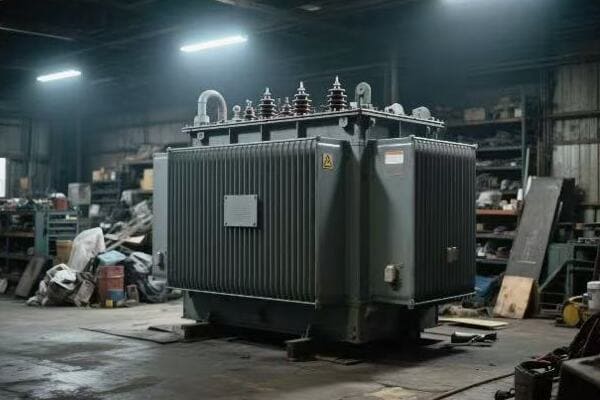
As someone who has worked in the power industry for years, I’ve seen firsthand how transformers shape our electrical systems. Let’s dive deeper into the world of electrical transformers and explore their crucial role in energy distribution.
Defining the Powerhouse: What Exactly Is an Electrical Transformer?
Imagine trying to drink from a fire hose. That’s what using electricity straight from a power plant would be like. Transformers are the devices that make electricity usable for us.
An electrical transformer is a static device that transfers electrical energy from one circuit to another by electromagnetic induction. Its main functions are to increase (step up) or decrease (step down) voltage levels and to isolate circuits.
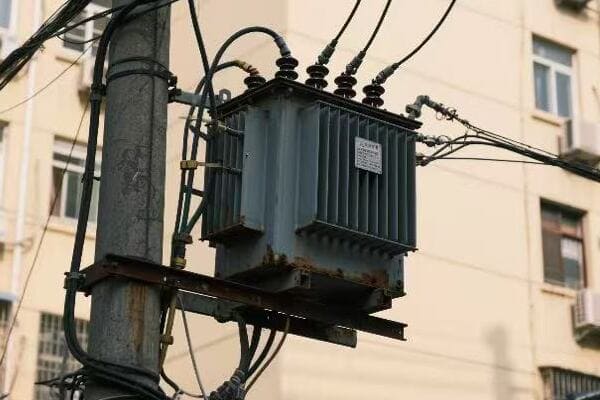
Let me break down the basics of electrical transformers for you, based on my years of experience in the field.
Core Components of an Electrical Transformer
An electrical transformer consists of three main parts:
- Primary Coil: This coil receives the input voltage.
- Secondary Coil: This coil delivers the output voltage.
- Iron Core: This core enhances the magnetic coupling between the coils.
How a Transformer Works
The basic principle of a transformer is simple:
- An alternating current in the primary coil creates a changing magnetic field.
- The iron core concentrates this magnetic field.
- The changing magnetic field induces a voltage in the secondary coil.
- The ratio of turns in the primary and secondary coils determines the voltage change.
Types of Transformers
We can classify transformers based on their primary function:
| Type | Function | Application |
|---|---|---|
| Step-Up | Increases voltage | Power plants to transmission lines |
| Step-Down | Decreases voltage | Substations to homes |
| Isolation | Separates circuits | Safety in electronic devices |
| Autotransformer | Slight voltage adjustments | Voltage regulation |
Why Transformers Matter
Transformers are crucial for our electrical grid. They allow us to:
- Transmit power efficiently over long distances by stepping up voltage.
- Use electricity safely in our homes by stepping down voltage.
- Isolate different parts of electrical systems for safety and control.
In my work designing power systems, I’ve seen how vital transformers are. Without them, we couldn’t have the widespread, safe electrical systems we rely on today. They’re the unsung heroes of our electrified world.
The Science Behind the Switch: How Transformers Manipulate Voltage and Current?
Have you ever wondered how transformers can change voltage and current levels so precisely? The answer lies in some fascinating scientific principles and mathematical relationships.
Transformers manipulate voltage and current using electromagnetic induction. They change voltage levels based on the ratio of turns in their primary and secondary coils. The voltage ratio is directly proportional to the turns ratio, while the current ratio is inversely proportional.
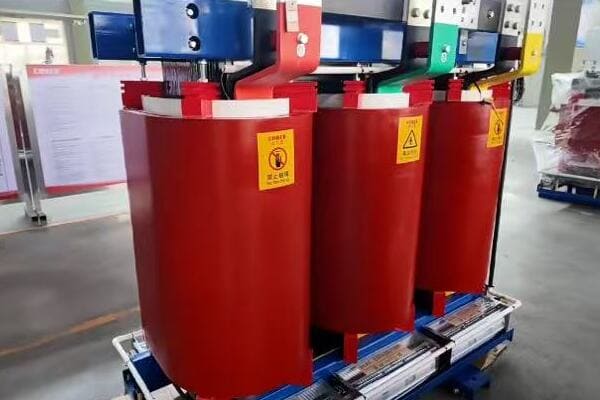
Let me break down the science behind transformer operation, based on my experience in the field.
Electromagnetic Induction: The Foundation
Electromagnetic induction is the key principle behind transformer operation. Here’s how it works:
- A changing magnetic field creates an electric field.
- This electric field can create a current in a nearby conductor.
- In a transformer, the changing current in the primary coil creates a changing magnetic field.
- This changing magnetic field induces a voltage in the secondary coil.
The Transformer Equation
The fundamental relationship in a transformer is described by the transformer equation:
Vs / Vp = Ns / Np
Where:
- Vs = Secondary Voltage
- Vp = Primary Voltage
- Ns = Number of turns in Secondary Coil
- Np = Number of turns in Primary Coil
This equation shows that the ratio of voltages is equal to the ratio of turns in the coils.
Current Transformation
The current transformation follows an inverse relationship:
Ip / Is = Ns / Np
Where:
- Ip = Primary Current
- Is = Secondary Current
This relationship ensures that power is conserved (ignoring losses).
Power Conservation
In an ideal transformer, the power in equals the power out:
Vp Ip = Vs Is
This equation is crucial for understanding how transformers maintain energy balance.
Practical Applications
Here’s how these principles play out in real-world scenarios:
| Scenario | Turns Ratio (Ns/Np) | Voltage Ratio (Vs/Vp) | Current Ratio (Ip/Is) |
|---|---|---|---|
| Step-Up | > 1 | > 1 | < 1 |
| Step-Down | < 1 | < 1 | > 1 |
| Isolation | = 1 | = 1 | = 1 |
In my work, I’ve seen how these scientific principles guide transformer design:
- Voltage Requirements: We determine the turns ratio based on the required voltage transformation.
- Current Capacity: We size the wire gauge based on the expected current in each coil.
- Power Rating: We ensure the transformer can handle the required power transfer.
Understanding these scientific principles is key to grasping how transformers work. It’s fascinating how these basic laws of physics enable devices that are so crucial to our modern electrical systems.
Transformers in Action: Key Roles in Power Generation, Transmission, and Distribution?
Have you ever stopped to think about the journey electricity takes from a power plant to your home? Transformers play a crucial role at every step of this journey.
Transformers are essential in power generation, transmission, and distribution. At power plants, they step up voltage for efficient long-distance transmission. In substations, they step down voltage for local distribution. Finally, pole-mounted transformers further reduce voltage for safe home use.
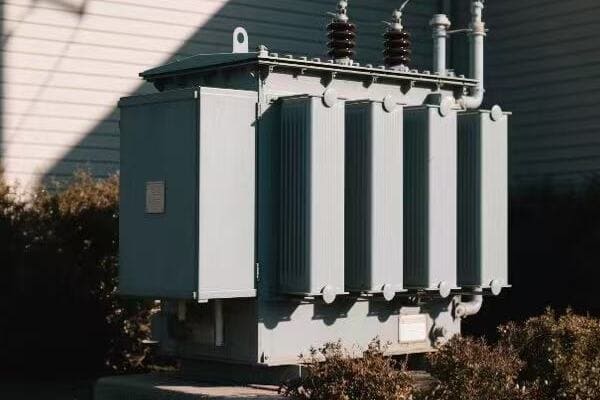
Let me walk you through the roles of transformers in our power systems, based on my years of experience in the field.
Power Generation: The Journey Begins
At power plants, electricity starts its journey:
- Generator Voltage: Typically 11kV to 25kV.
- Step-Up Transformer: Increases voltage to 155kV-765kV for transmission.
- Purpose: Higher voltage reduces power losses over long distances.
Transmission: The Long-Distance Journey
Transformers play a crucial role in long-distance power transmission:
- High Voltage Transmission: Typically 155kV to 765kV.
- Substations: Use transformers to adjust voltage for different transmission lines.
- HVDC Converters: Special transformers used in High Voltage Direct Current systems.
Sub-transmission: The Middle Mile
Sub-transmission systems bridge the gap between transmission and distribution:
- Voltage Levels: Typically 33kV to 155kV.
- Substations: Use transformers to step down voltage from transmission levels.
- Purpose: Supplies power to distribution substations in cities and industrial areas.
Distribution: Bringing Power to Neighborhoods
Distribution systems deliver power to end-users:
- Primary Distribution: Typically 4kV to 33kV.
- Distribution Transformers: Step down voltage to 120V/240V for residential use.
- Pole-mounted Transformers: Common sight in many neighborhoods.
Transformer Applications Across the Power System
Let’s summarize the applications:
| Stage | Transformer Type | Voltage Change | Purpose |
|---|---|---|---|
| Generation | Step-Up | 20kV to 765kV | Enable long-distance transmission |
| Transmission | Step-Up/Step-Down | 155kV to 765kV | Efficient power transfer |
| Sub-transmission | Step-Down | 765kV to 33kV | Supply distribution substations |
| Distribution | Step-Down | 33kV to 120/240V | Deliver power to end-users |
In my work across these stages of the power system, I’ve encountered various challenges:
- Efficiency: We’re constantly working to reduce losses, especially in large transformers.
- Reliability: Transformers must operate continuously for years without failure.
- Environmental Concerns: We’re developing more eco-friendly insulating materials and cooling methods.
- Smart Grid Integration: Modern transformers are being equipped with sensors and communication capabilities.
Understanding the roles of transformers across the power system gives us a new appreciation for these often-overlooked devices. They’re the key players in ensuring that the electricity generated at distant power plants safely and efficiently reaches our homes and businesses.
Beyond the Basics: Exploring Different Types of Transformers and Their Applications?
Did you know that not all transformers are created equal? The world of transformers is diverse, with each type serving a specific purpose in our electrical systems.
Transformers come in various types, each designed for specific applications. These include power transformers for electricity transmission, distribution transformers for local power delivery, instrument transformers for measurement, and special types like autotransformers and isolation transformers for unique applications.
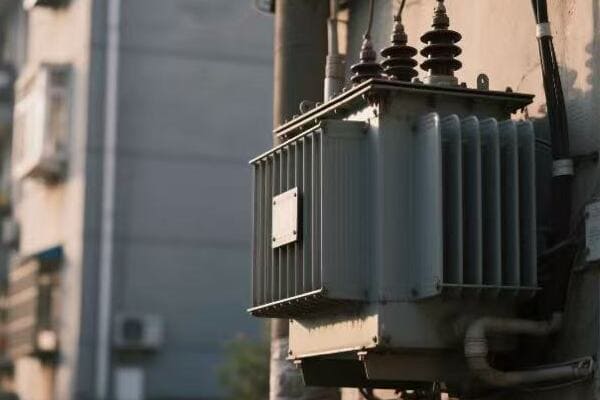
Let me guide you through the different types of transformers I’ve encountered in my career, and explain how each plays a crucial role in our power systems.
Power Transformers: The Backbone of Transmission
Power transformers are the giants of the transformer world. Here’s what you need to know:
- Function: They handle large amounts of electrical power in generation and transmission systems.
- Voltage Levels: Typically operate at voltages above 33kV.
- Efficiency: Designed for very high efficiency, often above 99%.
- Cooling: Often use oil for insulation and cooling.
Distribution Transformers: Bringing Power to Your Neighborhood
Distribution transformers are the workhorses of power distribution. Let’s break them down:
- Function: They reduce voltage from distribution levels to levels suitable for end-users.
- Voltage Levels: Typically step down from 4kV-33kV to 120V/240V for residential use.
- Location: Found on utility poles or in ground-mounted enclosures.
- Design: Often designed for lower cost and easier maintenance than power transformers.
Instrument Transformers: Measuring and Protecting
Instrument transformers are the eyes and ears of our power systems:
- Types: Current transformers (CTs) and potential transformers (PTs).
- Function: They step down current or voltage for measurement and protection devices.
- Accuracy: Highly accurate for precise measurements.
- Applications: Used in metering, relaying, and control circuits.
Special Types of Transformers
There are several special types of transformers for unique applications:
- Autotransformers: Use a single winding for both primary and secondary. Efficient for small voltage changes.
- Isolation Transformers: Provide electrical isolation between circuits. Common in medical and test equipment.
- Rectifier Transformers: Designed to supply power to rectifiers in high-voltage DC transmission systems.
- Phase-Shifting Transformers: Control power flow in transmission systems by changing phase angle.
Comparison of Transformer Types
Let’s compare these types:
| Type | Primary Use | Voltage Levels | Key Feature |
|---|---|---|---|
| Power | Transmission | >33kV | High efficiency |
| Distribution | Local power delivery | 4kV-33kV to 120V/240V | Cost-effective |
| Instrument | Measurement | Various | High accuracy |
| Autotransformer | Voltage adjustment | Various | Single winding |
| Isolation | Circuit separation | Various | Electrical isolation |
In my work designing and specifying transformers, choosing the right type is crucial. Here are some factors I consider:
- Application: What’s the primary function needed?
- Voltage Levels: What are the input and required output voltages?
- Power Rating: How much power needs to be transformed?
- Environment: Where will the transformer be installed?
- Efficiency: How important is minimizing losses?
- Cost: What’s the budget for the project?
Understanding the different types of transformers and their applications is essential for creating efficient and reliable power systems. Each type has its strengths, and using the right transformer for the job can make a significant difference in system performance and safety.
Powering Our World: The Impact of Transformers on Grid Efficiency and Reliability?
Have you ever wondered how our power grid stays stable despite constantly changing demands? Transformers play a crucial role in maintaining this delicate balance and ensuring the efficiency and reliability of our electrical systems.
Transformers significantly impact grid efficiency and reliability by enabling efficient power transmission, regulating voltage levels, and providing system flexibility. They reduce power losses, help maintain power quality, and enable the integration of renewable energy sources into the grid.
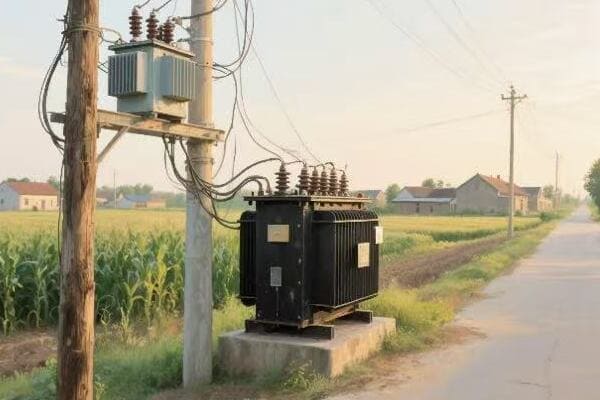
Let me share some insights from my experience about how transformers contribute to grid efficiency and reliability.
Enhancing Transmission Efficiency
Transformers are key to efficient power transmission:
- Step-Up Transformers: By increasing voltage for transmission, they significantly reduce power losses.
- High Voltage Transmission: Enables power to be transmitted over long distances with minimal losses.
- Reduced Current: Higher voltage means lower current for the same power, reducing I²R losses in transmission lines.
Maintaining Voltage Stability
Transformers play a crucial role in voltage regulation:
- On-Load Tap Changers: Allow transformers to adjust voltage ratios while in operation.
- Voltage Control: Help maintain voltage within acceptable limits across the grid.
- Reactive Power Management: Some transformers can provide or absorb reactive power, aiding voltage stability.
Improving Power Quality
Transformers contribute to overall power quality:
- Harmonic Mitigation: Specially designed transformers can help reduce harmonics in the power system.
- Isolation: Transformers can isolate sensitive loads from power quality issues in the main grid.
- Phase Shifting: Some transformers can adjust phase angles to optimize power flow.
Enabling System Flexibility
Transformers provide flexibility to the power system:
- Interconnection: Allow different voltage levels to be interconnected, enabling a flexible grid structure.
- Load Management: Distribution transformers can be sized and located to optimize load distribution.
- Renewable Integration: Special transformers help integrate variable renewable energy sources into the grid.
Enhancing System Reliability
Transformers are crucial for system reliability:
- Redundancy: Multiple transformers can be used to provide backup in case of failures.
- Fault Isolation: Transformers can help isolate faults, preventing them from affecting the entire system.
- Monitoring and Diagnostics: Modern transformers often include sensors for real-time monitoring and predictive maintenance.
Impact of Transformers on Grid Performance
Let’s summarize the impact:
| Aspect | How Transformers Help | Benefit to Grid |
|---|---|---|
| Efficiency | Enable high-voltage transmission | Reduced power losses |
| Voltage Stability | Provide voltage regulation | Consistent power quality |
| Power Quality | Mitigate harmonics and provide isolation | Improved system performance |
| Flexibility | Allow interconnection of different voltage levels | Adaptable grid structure |
| Reliability | Enable redundancy and fault isolation | Increased system uptime |
In my work optimizing power systems, I’ve seen how crucial transformers are to grid performance. Here are some real-world considerations:
- Efficiency vs. Cost: More efficient transformers often have a higher upfront cost but lower lifetime operating costs.
- Smart Grid Integration: Modern transformers are being equipped with sensors and communication capabilities for better grid management.
- Environmental Concerns: We’re developing more eco-friendly transformer designs, including better cooling methods and biodegradable insulating fluids.ids are facing challenges with aging transformer fleets, requiring careful maintenance and replacement strategies.
- Renewable Energy Integration: Transformers are being adapted to handle the variable nature of renewable energy sources.
Understanding the impact of transformers on grid efficiency and reliability is crucial for anyone interested in the future of our energy systems. These devices, often overlooked, are at the forefront of our efforts to create a more reliable, efficient, and sustainable power grid.
Future Trends in Transformer Technology
Looking ahead, I see several exciting developments in transformer technology that will further enhance grid performance:
-
Solid-State Transformers: These combine power electronics with traditional transformer principles for more flexible power control and improved efficiency.
-
High-Temperature Superconducting Transformers: These promise near-zero resistance and very low losses, potentially revolutionizing power transmission.
-
AI and Machine Learning Integration: Advanced analytics will enable predictive maintenance and optimized transformer operation.
-
Nanotechnology in Transformer Design: Nanomaterials could lead to more efficient and compact transformer cores.
-
Biodegradable Transformer Fluids: These environmentally friendly alternatives to traditional transformer oil are becoming more common.
As we move towards a more sustainable and resilient energy future, transformers will continue to play a pivotal role. Their ability to efficiently and reliably manage power flow will be crucial in integrating renewable energy sources, supporting electric vehicle charging infrastructure, and enabling smart grid technologies.
In my work, I’m excited to be part of this evolution. Whether it’s designing more efficient transformers, implementing smart monitoring systems, or exploring new materials, the field of transformer technology is constantly advancing. It’s a reminder that even as we rely on principles discovered nearly two centuries ago, we’re always finding new ways to improve and innovate.
Conclusion
Electrical transformers are the unsung heroes of our power systems. They play a crucial role in voltage transformation, efficient power transmission, and maintaining grid reliability. From power plants to our homes, transformers are essential for our modern electrified world.
Have you ever wondered how electricity from power plants safely reaches your home? The answer lies in a crucial device: the electrical transformer. Without it, our modern electrical grid wouldn’t exist.
Electrical transformers work by using electromagnetic induction to transfer energy between two or more circuits. They change voltage levels, making power transmission efficient and electricity use safe. This process involves core components like coils and an iron core, and follows specific mathematical principles.
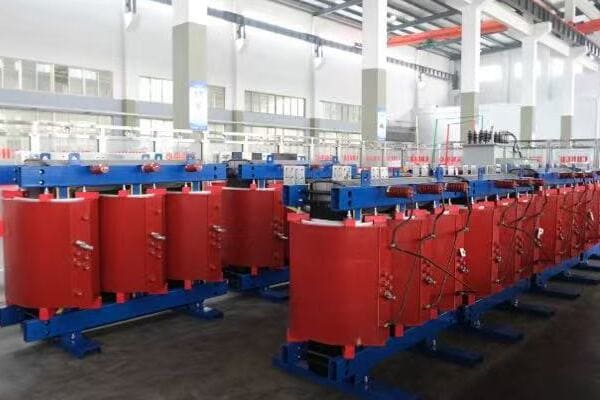
As someone who has worked in the power industry for years, I’ve seen firsthand how transformers shape our electrical systems. Let’s dive deeper into the world of electrical transformers and explore their fascinating workings by answering five key questions.
The Fundamental Principle: How Electromagnetic Induction Powers Transformers?
Have you ever been curious about the magic behind transformers? How can they change voltage levels so efficiently? The answer lies in a fascinating principle: electromagnetic induction.
Electromagnetic induction is the process by which a changing magnetic field creates an electric current in a nearby conductor. In transformers, this principle allows energy to be transferred between circuits, enabling voltage transformation without direct electrical connection.
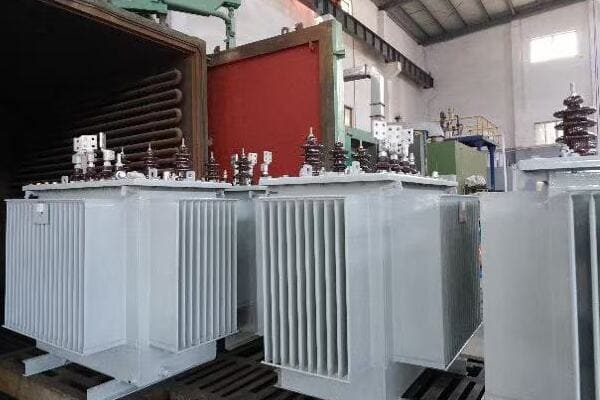
Let me explain this fascinating principle and how it applies to transformers, based on my experience in the field.
The Discovery of Electromagnetic Induction
Michael Faraday discovered electromagnetic induction in 1831. This discovery changed the world of electricity forever. Here’s how it works:
- A changing magnetic field creates an electric field.
- This electric field can create a current in a nearby conductor.
How Electromagnetic Induction Works in Transformers
In a transformer, we use electromagnetic induction to transfer energy between two coils. Here’s the process:
- Primary Coil: We apply an alternating current to this coil.
- Changing Magnetic Field: The alternating current creates a changing magnetic field.
- Iron Core: This concentrates and directs the magnetic field.
- Secondary Coil: The changing magnetic field induces a voltage in this coil.
Faraday’s Law of Induction
Faraday’s Law is the mathematical expression of electromagnetic induction. It states that the induced electromotive force (EMF) in a circuit is proportional to the rate of change of magnetic flux through the circuit. In equation form:
EMF = -N * (dΦ/dt)
Where:
- EMF is the induced electromotive force
- N is the number of turns in the coil
- dΦ/dt is the rate of change of magnetic flux
Practical Applications in Transformers
| Component | Role in Electromagnetic Induction |
|---|---|
| Primary Coil | Creates changing magnetic field |
| Iron Core | Concentrates and directs magnetic field |
| Secondary Coil | Experiences induced voltage |
In my work with transformers, I’ve seen how understanding these principles is crucial for design and troubleshooting:
- Core Material: We choose materials with high magnetic permeability to enhance the magnetic field.
- Coil Design: The number of turns in each coil directly affects the voltage transformation.
- Frequency Considerations: The frequency of the AC supply affects the rate of change of the magnetic field.
Understanding electromagnetic induction is key to grasping how transformers work. It’s amazing how this simple principle, discovered almost two centuries ago, still forms the basis of our modern electrical grid.
Anatomy of a Transformer: Understanding Core Components and Their Functions?
Have you ever wondered what’s inside a transformer? These devices may look simple from the outside, but their internal structure is key to their function.
A transformer consists of three main components: the primary coil, the secondary coil, and the iron core. The primary coil receives the input voltage, the secondary coil outputs the transformed voltage, and the iron core enhances the magnetic coupling between the coils.

Let me take you on a tour of a transformer’s anatomy, based on my years of experience working with these devices.
The Primary Coil: Where It All Begins
The primary coil is where we input the electrical energy. Here’s what you need to know:
- Function: It receives the input voltage and creates a changing magnetic field.
- Construction: It’s made of insulated copper wire wound around one leg of the iron core.
- Turns: The number of turns in this coil determines the input voltage rating.
The Secondary Coil: Where Transformation Happens
The secondary coil is where we get our transformed voltage. Here are its key features:
- Function: It receives the changing magnetic field and produces the output voltage.
- Construction: Like the primary, it’s made of insulated copper wire on the iron core.
- Turns: The number of turns here, compared to the primary, determines the voltage change.
The Iron Core: The Magnetic Highway
The iron core is crucial for efficient operation. Here’s why:
- Function: It provides a path for the magnetic field, increasing the coupling between coils.
- Material: Usually made of laminated silicon steel to reduce eddy current losses.
- Types: Can be core-type (coils around outside) or shell-type (coils inside).
Additional Components for Efficiency and Safety
While the coils and core are the main parts, transformers often have additional components:
- Insulation: Prevents short circuits between turns and layers.
- Cooling System: Oil or air cooling to manage heat from losses.
- Tap Changer: Allows for small adjustments in turns ratio.
- Bushings: Insulated passages for connections to enter/exit the transformer.
Comparison of Transformer Components
| Component | Function | Material | Key Consideration |
|---|---|---|---|
| Primary Coil | Receives input voltage | Copper wire | Number of turns |
| Secondary Coil | Outputs transformed voltage | Copper wire | Turns ratio with primary |
| Iron Core | Enhances magnetic coupling | Silicon steel | Lamination for loss reduction |
| Insulation | Prevents short circuits | Various | Dielectric strength |
| Cooling System | Manages heat | Oil or air | Efficiency of heat dissipation |
In my work designing transformers, I’ve learned that the relationship between these components is crucial. Here are some key considerations:
- Core Size: Must be large enough to handle the magnetic flux without saturation.
- Wire Gauge: Must be thick enough to handle the current without overheating.
- Insulation: Must withstand the voltage stress between turns and layers.
- Cooling: Must be adequate to dissipate heat and maintain efficiency.
Understanding the anatomy of a transformer is crucial for designing efficient and reliable power systems. Each component plays a vital role, and the interplay between them determines the transformer’s performance.
Voltage and Current Transformation: The Mathematics Behind the Magic?
Have you ever wondered how transformers can change voltage and current levels so precisely? The answer lies in some fascinating mathematical relationships.
Transformers change voltage and current levels based on the ratio of turns in their primary and secondary coils. The voltage ratio is directly proportional to the turns ratio, while the current ratio is inversely proportional. This relationship is governed by the principle of conservation of energy.
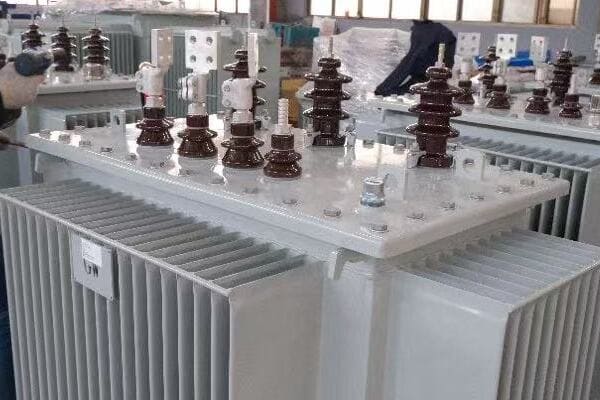
Let me break down the mathematics behind transformer operation, based on my experience in the field.
The Transformer Equation
The fundamental relationship in a transformer is described by the transformer equation:
Vs / Vp = Ns / Np
Where:
- Vs = Secondary Voltage
- Vp = Primary Voltage
- Ns = Number of turns in Secondary Coil
- Np = Number of turns in Primary Coil
This equation shows that the ratio of voltages is equal to the ratio of turns in the coils.
Current Transformation
The current transformation follows an inverse relationship:
Ip / Is = Ns / Np
Where:
- Ip = Primary Current
- Is = Secondary Current
This relationship ensures that power is conserved (ignoring losses).
Power Conservation
In an ideal transformer, the power in equals the power out:
Vp Ip = Vs Is
This equation is crucial for understanding how transformers maintain energy balance.
Practical Applications
Here’s how these equations play out in real-world scenarios:
| Scenario | Turns Ratio (Ns/Np) | Voltage Ratio (Vs/Vp) | Current Ratio (Ip/Is) |
|---|---|---|---|
| Step-Up | > 1 | > 1 | < 1 |
| Step-Down | < 1 | < 1 | > 1 |
| Isolation | = 1 | = 1 | = 1 |
In my work, I’ve seen how these mathematical relationships guide transformer design:
- Voltage Requirements: We determine the turns ratio based on the required voltage transformation.
- Current Capacity: We size the wire gauge based on the expected current in each coil.
- Power Rating: We ensure the transformer can handle the required power transfer.
Real-World Considerations
While these equations describe ideal transformers, real-world devices have some deviations:
- Losses: Core losses and copper losses reduce efficiency.
- Leakage Inductance: Not all magnetic flux links both coils.
- Winding Resistance: Causes voltage drop and power loss.
Understanding these mathematical relationships is key to designing and using transformers effectively. It’s fascinating how these simple equations govern devices that are so crucial to our modern electrical systems.
Efficiency in Action: Factors Affecting Transformer Performance?
Have you ever wondered why some transformers perform better than others? The key lies in understanding the factors that affect transformer efficiency.
Transformer efficiency is influenced by several factors including core losses, copper losses, operating temperature, and load conditions. High-efficiency transformers minimize these losses through careful design, material selection, and proper operation.
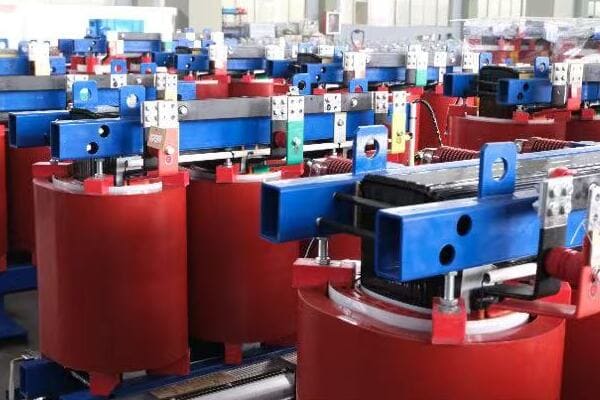
Let me share some insights from my experience about the factors that affect transformer performance and how we can optimize them.
Core Losses: The Silent Energy Drain
Core losses, also known as iron losses, occur in the transformer’s magnetic core. They consist of two main types:
- Hysteresis Loss: Energy lost in repeatedly magnetizing and demagnetizing the core.
- Eddy Current Loss: Energy lost due to currents induced in the core material.
To minimize core losses:
- We use high-quality silicon steel for the core.
- We laminate the core to reduce eddy currents.
- We optimize the core design to reduce the magnetic path length.
Copper Losses: The Resistance Factor
Copper losses, or I²R losses, occur due to the resistance of the transformer windings. They increase with the square of the current.
To reduce copper losses:
- We use larger wire gauges to reduce resistance.
- We design for shorter winding lengths where possible.
- We use parallel conductors for high-current windings.
Temperature Effects: Keeping Cool Under Pressure
Operating temperature significantly affects transformer efficiency. Higher temperatures increase resistance and thus copper losses.
To manage temperature:
- We use efficient cooling systems (oil or air cooling).
- We design for optimal heat dissipation.
- We monitor temperature during operation to prevent overheating.
Load Conditions: Finding the Sweet Spot
Transformers are most efficient at their rated load. Both underloading and overloading can reduce efficiency.
To optimize for load conditions:
- We size transformers appropriately for their expected load.
- We use tap changers to adjust for varying load conditions.
- We implement load management strategies in power systems.
Comparison of Efficiency Factors
| Factor | Cause | Mitigation Strategy |
|---|---|---|
| Core Losses | Magnetic core cycling | High-quality core material, lamination |
| Copper Losses | Winding resistance | Larger wire gauge, shorter windings |
| Temperature | Heat generation | Efficient cooling, thermal design |
| Load Conditions | Mismatch with rated load | Proper sizing, tap changing |
In my work designing and optimizing transformers, I’ve learned that balancing these factors is crucial. Here are some real-world considerations:
- Cost vs. Efficiency: Higher efficiency often means higher initial cost. We need to balance this with long-term energy savings.
- Size and Weight: Improving efficiency often increases size and weight. This can be a challenge in space-constrained applications.
- Environmental Conditions: Factors like altitude, ambient temperature, and humidity can affect transformer performance.
- Harmonics: In modern power systems, harmonic currents can significantly impact transformer efficiency.
Understanding and optimizing these factors is key to designing high-performance transformers. It’s a constant challenge to balance efficiency, cost, size, and reliability, but it’s crucial for creating sustainable and effective power systems.
From Theory to Practice: Real-World Applications of Transformer Principles?
Have you ever wondered how the principles of transformer operation translate into real-world applications? The theory we’ve discussed comes to life in a wide range of practical uses.
Transformer principles find applications in various fields, from power distribution to electronics and renewable energy. They enable efficient power transmission, voltage conversion in electronic devices, and integration of renewable sources into the grid.
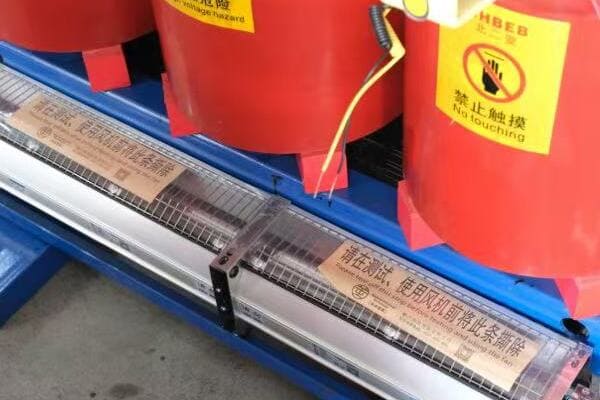
Let me share some examples from my experience of how transformer principles are applied in different sectors.
Power Distribution: The Backbone of Our Electrical Grid
In power distribution, transformers play a crucial role:
- Step-Up Transformers: At power plants, these increase voltage for long-distance transmission.
- Step-Down Transformers: At substations, these reduce voltage for local distribution.
- Pole-Mounted Transformers: These further step down voltage for residential use.
Electronics: Enabling Our Digital World
In electronics, transformers are essential components:
- Power Supplies: They convert high voltage AC to low voltage DC for electronic devices.
- Audio Equipment: Output transformers in tube amplifiers shape the sound quality.
- Isolation Transformers: These provide safety in medical and test equipment.
Industrial Applications: Powering Manufacturing
Industry relies heavily on transformer technology:
- Arc Welding: Welding transformers provide the high current needed for welding.
- Induction Furnaces: Transformers supply power for melting metal in foundries.
- Variable Frequency Drives: These use transformers to control motor speeds.
Renewable Energy: Integrating Clean Power
Transformers are crucial in renewable energy systems:
- Wind Farms: They step up voltage from wind turbines for grid connection.
- Solar Inverters: Transformers help convert DC from solar panels to AC for the grid.
- Smart Grids: Advanced transformers enable bidirectional power flow in smart grids.
Comparison of Transformer Applications
| Application | Transformer Type | Key Function | Typical Size Range |
|---|---|---|---|
| Power Transmission | Step-Up | Increase voltage for transmission | 100 MVA – 1000 MVA |
| Local Distribution | Step-Down | Reduce voltage for safe use | 5 MVA – 100 MVA |
| Electronic Devices | Small SMPS Transformers | Convert to low voltage DC | 1 VA – 1 kVA |
| Industrial Welding | Welding Transformers | Provide high current at low voltage | 5 kVA – 50 kVA |
| Wind Farms | Wind Turbine Transformers | Step up voltage for grid connection | 1 MVA – 10 MVA |
In my work across these sectors, I’ve encountered various challenges and innovations:
- Size and Weight Reduction: In electronics, we’re constantly working to make transformers smaller and lighter.
- Efficiency Improvements: In power distribution, even small efficiency gains can lead to significant energy savings.
- High-Frequency Operation: In switch-mode power supplies, transformers operate at high frequencies for better efficiency.
- Smart Transformers: In modern grids, we’re developing transformers with communication and control capabilities.
Understanding these real-world applications helps bridge the gap between theory and practice. It’s fascinating to see how the basic principles of electromagnetic induction, discovered nearly two centuries ago, continue to shapeour modern world in so many ways.
Emerging Applications: The Future of Transformer Technology
As technology evolves, new applications for transformers are emerging:
- Electric Vehicle Charging: Fast-charging stations use transformers to provide high-power DC charging.
- Solid-State Transformers: These combine power electronics with traditional transformer principles for more flexible power control.
- Quantum Transformers: Research is ongoing into using quantum effects to create more efficient transformers.
Challenges in Real-World Applications
In my experience, applying transformer principles in the real world comes with several challenges:
- Harmonics: Modern electronic loads can introduce harmonics, which transformers must be designed to handle.
- Extreme Environments: Transformers in offshore wind farms or desert solar plants must withstand harsh conditions.
- Size Constraints: In urban environments or portable devices, space for transformers is often limited.
- Reliability: In critical applications like hospitals or data centers, transformer reliability is paramount.
Innovations Addressing Real-World Challenges
To address these challenges, the industry is constantly innovating:
- Advanced Materials: New core materials like amorphous metals are reducing losses.
- Digital Twins: Virtual models of transformers help predict and optimize performance.
- Biodegradable Insulating Fluids: These are replacing traditional transformer oil for better environmental safety.
- IoT Integration: Sensors and connectivity are enabling predictive maintenance of transformers.
Understanding these real-world applications and challenges is crucial for anyone working with transformer technology. It’s not just about the theory – it’s about how we apply that theory to solve real problems and create efficient, reliable power systems.
Conclusion
Electrical transformers are fascinating devices that work on the principle of electromagnetic induction. They play a crucial role in voltage transformation, power distribution, and various applications across industries. Understanding their operation is key to advancing our electrical systems.
Have you ever wondered how electricity from power plants safely reaches your home? The answer lies in a crucial device: the power transformer. Without it, our modern electrical grid wouldn’t exist.
The main function of a power transformer is to change voltage levels in electrical power systems. It does this by using electromagnetic induction to transfer energy between two or more circuits. This ability is essential for efficient power transmission and safe electricity use.
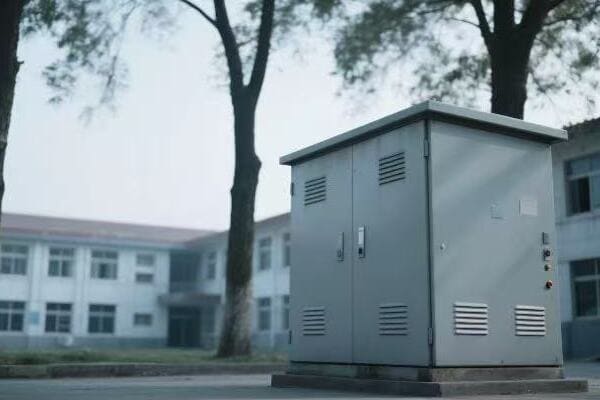
As someone who has worked in the power industry for years, I’ve seen firsthand how transformers shape our electrical systems. Let’s dive deeper into the world of power transformers and explore their fascinating workings.
Voltage Transformation: The Primary Role of Power Transformers in Electrical Systems?
Imagine trying to drink from a fire hose. That’s what using electricity straight from a power plant would be like. Power transformers are the devices that make electricity usable for us.
The primary role of power transformers in electrical systems is voltage transformation. They can increase (step up) or decrease (step down) voltage levels as needed. This ability is crucial for efficient power transmission and safe electricity use.
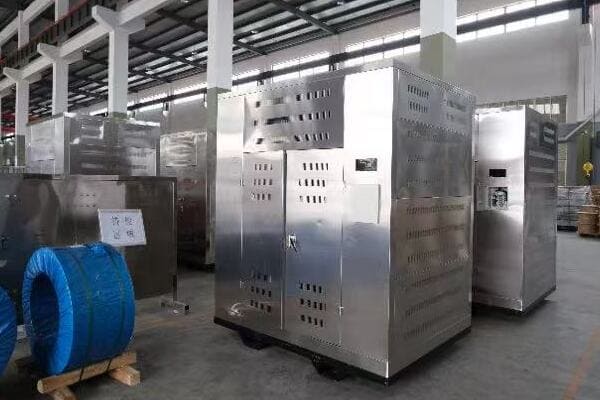
Let me break down the basics of voltage transformation in power transformers, based on my years of experience in the field.
Why Voltage Transformation Matters
Voltage transformation is crucial for our power systems. Here’s why:
- Efficient Transmission: High voltage is needed for long-distance power transmission to reduce losses.
- Safe Usage: Lower voltage is required for safe use in homes and businesses.
- Equipment Compatibility: Different devices need different voltage levels to operate correctly.
How Power Transformers Transform Voltage
Power transformers change voltage through a process called electromagnetic induction. Here’s a simple breakdown:
- Primary Coil: This coil receives the input voltage.
- Magnetic Field: The alternating current in the primary coil creates a changing magnetic field.
- Secondary Coil: This coil is exposed to the changing magnetic field, which induces a new voltage.
- Turns Ratio: The ratio of turns in the primary and secondary coils determines the voltage change.
Types of Voltage Transformation
Power transformers can transform voltage in two main ways:
| Type | Function | Application |
|---|---|---|
| Step-Up | Increases voltage | Power plants to transmission lines |
| Step-Down | Decreases voltage | Substations to homes |
Real-World Examples
In my work, I’ve seen power transformers used in various settings:
- Power Plants: Step-up transformers increase voltage for long-distance transmission.
- Substations: Step-down transformers decrease voltage for local distribution.
- Pole-mounted Transformers: These further step down voltage for residential use.
- Industrial Facilities: Large transformers adjust voltage for specific manufacturing processes.
Understanding voltage transformation is key to grasping the role of power transformers in our electrical systems. It’s this ability that allows us to have a flexible and efficient electrical grid, capable of delivering power from distant plants to our homes safely and efficiently.
Beyond Voltage Change: How Transformers Optimize Power Transmission and Distribution?
Have you ever wondered why we need such high voltages for power transmission? The answer lies in the transformer’s ability to optimize power transmission and distribution, going beyond simple voltage changes.
Power transformers optimize transmission and distribution by enabling high-voltage, low-current power transfer over long distances. This reduces power losses and improves overall system efficiency. They also provide isolation, regulate voltage, and help manage power factor.
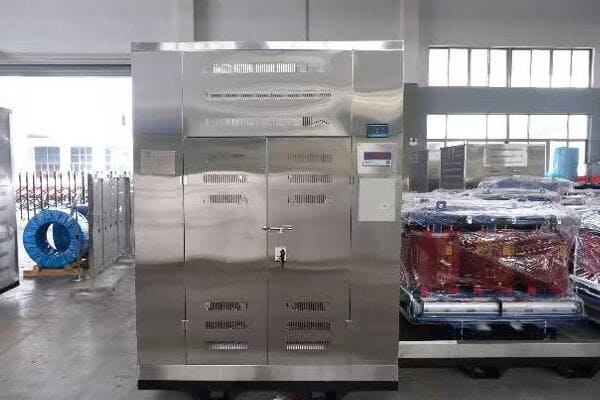
Let me explain how transformers optimize our power systems, drawing from my experience in the field.
Reducing Power Losses
One of the main ways transformers optimize power transmission is by reducing losses. Here’s how:
- High Voltage Transmission: Transformers allow us to step up voltage for transmission.
- Lower Current: Higher voltage means lower current for the same power.
- Reduced Losses: Power loss in transmission lines is proportional to the square of the current (P = I^2 * R).
Improving System Efficiency
Transformers improve overall system efficiency in several ways:
- Matching Source and Load: They help match the voltage of power sources to the needs of loads.
- Reducing Line Voltage Drop: By using higher voltages, they reduce voltage drop over long distances.
- Enabling Parallel Operation: Transformers allow multiple generators to work together efficiently.
Providing Electrical Isolation
Isolation is another key function of transformers:
- Safety: They isolate high-voltage systems from low-voltage ones, enhancing safety.
- Noise Reduction: Isolation helps reduce electrical noise in sensitive equipment.
- Ground Fault Protection: Isolation transformers can prevent ground fault currents from propagating.
Voltage Regulation
Transformers play a crucial role in voltage regulation:
- Tap Changers: Many transformers have tap changers to adjust voltage ratios.
- Automatic Voltage Regulators: Some transformers work with voltage regulators to maintain stable voltage.
Power Factor Correction
In some cases, transformers can help with power factor correction:
- Reactive Power: They can provide or absorb reactive power to improve power factor.
- Efficiency Improvement: Better power factor means more efficient power transmission.
Comparison of Transformer Optimization Techniques
| Technique | How It Works | Benefit |
|---|---|---|
| High Voltage Transmission | Steps up voltage for transmission | Reduces power losses |
| Electrical Isolation | Separates primary and secondary circuits | Enhances safety and reduces noise |
| Tap Changing | Adjusts turns ratio | Helps regulate voltage |
| Reactive Power Control | Provides or absorbs reactive power | Improves power factor |
In my work designing power systems, I’ve seen how these optimization techniques make a real difference. They’re the reason we can have a reliable and efficient power grid spanning vast distances. Understanding these aspects of transformer operation is crucial for anyone working in or interested in power systems.
The Science of Transformation: Electromagnetic Principles in Power Transformers?
Have you ever been curious about the magic behind power transformers? How can they change voltage levels so efficiently? The answer lies in a fascinating interplay of electromagnetic principles.
Power transformers work based on the principles of electromagnetic induction and mutual inductance. They use two or more coils of wire wrapped around an iron core. When alternating current flows through one coil, it creates a changing magnetic field that induces a voltage in the other coil.

Let me explain these fascinating principles and how they apply to power transformers, based on my experience in the field.
Electromagnetic Induction: The Foundation
Electromagnetic induction is the key principle behind transformer operation. Here’s how it works:
- Changing Magnetic Field: When an alternating current flows through a coil, it creates a changing magnetic field.
- Induced Voltage: This changing magnetic field can induce a voltage in a nearby conductor.
- Faraday’s Law: The induced voltage is proportional to the rate of change of the magnetic field.
Mutual Inductance: The Transfer of Energy
Mutual inductance is how transformers transfer energy between coils:
- Primary Coil: The coil connected to the power source.
- Secondary Coil: The coil where we want to induce a voltage.
- Shared Magnetic Field: Both coils are linked by the same magnetic field.
- Energy Transfer: Energy is transferred from the primary to the secondary through this shared field.
The Role of the Iron Core
The iron core in a transformer plays a crucial role:
- Increased Magnetic Flux: Iron has high magnetic permeability, increasing the magnetic flux.
- Improved Coupling: It improves the coupling between the primary and secondary coils.
- Reduced Magnetizing Current: It reduces the current needed to create the magnetic field.
The Transformer Equation
The relationship between the primary and secondary coils is described by the transformer equation:
Vs / Vp = Ns / Np
Where:
- Vs = Secondary Voltage
- Vp = Primary Voltage
- Ns = Number of turns in Secondary Coil
- Np = Number of turns in Primary Coil
Electromagnetic Principles in Action
Let’s see how these principles work together in a transformer:
| Principle | How It’s Applied | Result |
|---|---|---|
| Electromagnetic Induction | AC in primary coil creates changing magnetic field | Voltage induced in secondary coil |
| Mutual Inductance | Coils share a magnetic field | Energy transferred between coils |
| Iron Core | Concentrates magnetic field | Improves efficiency of energy transfer |
Practical Considerations
In my work with power transformers, I’ve learned that understanding these principles is crucial for design and troubleshooting:
- Core Saturation: We must design transformers to avoid core saturation, which can lead to inefficiency and harmonics.
- Eddy Currents: We use laminated cores to reduce eddy current losses.
- Hysteresis: Choosing the right core material can minimize hysteresis losses.
- Leakage Flux: Proper coil arrangement helps minimize leakage flux and improve efficiency.
Understanding these electromagnetic principles is key to grasping how power transformers work. It’s amazing how these fundamental laws of physics, discovered over a century ago, still form the basis of our modern electrical grid.
Transformer Functions Across Industries: From Residential to Heavy Industrial Applications?
Have you ever stopped to think about how many transformers you encounter in a day? From your home to large industrial facilities, transformers play crucial roles in various settings.
Power transformers serve diverse functions across industries. In residential settings, they step down voltage for safe home use. In commercial buildings, they power lighting and HVAC systems. In heavy industry, they provide the massive power needed for manufacturing processes and electric arc furnaces.
Let me take you on a tour of transformer applications across different industries, based on my years of experience in the power sector.
Residential Applications
In our homes, transformers are working behind the scenes:
- Distribution Transformers: These step down voltage from the grid to levels safe for home use.
- Doorbell Transformers: They reduce voltage for doorbell operation.
- HVAC Systems: Transformers power the control circuits in heating and cooling systems.
Commercial Buildings
Commercial buildings rely heavily on transformers:
- Lighting Systems: Transformers power both indoor and outdoor lighting.
- Elevator Systems: They provide the power needed for elevator operation.
- Security Systems: Transformers supply power to surveillance cameras and access control systems.
Healthcare Facilities
Hospitals and clinics have specialized transformer needs:
- Isolation Transformers: These provide electrical isolation for sensitive medical equipment.
- Uninterruptible Power Supplies (UPS): Transformers are key components in UPS systems.
- MRI Machines: Special transformers power these high-energy diagnostic tools.
Heavy Industry
Industrial applications often require large, specialized transformers:
- Electric Arc Furnaces: These use massive transformers to provide the high currents needed for steel production.
- Electrolysis Processes: Transformers supply the DC power needed for aluminum production.
- Variable Frequency Drives: Transformers are part of systems that control motor speeds in various processes.
Renewable Energy
The renewable energy sector relies on transformers:
- Wind Farms: Step-up transformers increase voltage for long-distance transmission from offshore wind farms.
- Solar Farms: Inverter transformers convert DC power from solar panels to AC for grid use.
- Hydroelectric Plants: Large transformers step up voltage for power transmission from remote locations.
Comparison of Transformer Applications Across Industries
| Industry | Transformer Type | Function | Typical Size |
|---|---|---|---|
| Residential | Distribution | Step down voltage for home use | 10-50 kVA |
| Commercial | Dry-type | Power building systems | 75-2500 kVA |
| Healthcare | Isolation | Protect sensitive equipment | 3-300 kVA |
| Heavy Industry | Oil-filled | Power large industrial processes | 5-100 MVA |
| Renewable Energy | Step-up | Increase voltage for transmission | 1-100 MVA |
Challenges and Innovations
In my work across these industries, I’ve encountered various challenges:
- Size and Weight: In urban environments, we’re always looking for ways to make transformers smaller and lighter.
- Efficiency: Improving efficiency is a constant goal, especially for large industrial transformers.
- Reliability: In critical applications like healthcare, transformer reliability is paramount.
- Environmental Concerns: We’re developing more environmentally friendly insulating materials and cooling methods.
Understanding the diverse applications of transformers across industries gives us a new appreciation for these often-overlooked devices. From the small transformers in our homes to the massive ones in industrial facilities, these devices are working tirelessly to power our modern world.
Enhancing Grid Stability and Efficiency: The Critical Role of Power Transformers?
Have you ever wondered how our power grid stays stable despite constantly changing demands? Power transformers play a crucial role in maintaining this delicate balance.
Power transformers enhance grid stability and efficiency by regulating voltage, managing power flow, and providing reactive power support. They also enable the integration of renewable energy sources and help in fault isolation, contributing to a more reliable and efficient power system.
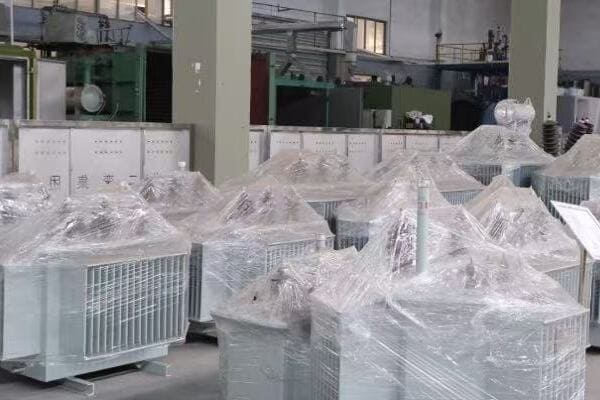
Let me share some insights from my experience about how transformers contribute to grid stability and efficiency.
Voltage Regulation
Transformers are key to maintaining stable voltage levels:
- On-Load Tap Changers: These allow transformers to adjust voltage ratios while in operation.
- Voltage Control: Transformers help maintain voltage within acceptable limits across the grid.
- Voltage Profile Improvement: By strategically placing transformers, we can improve the voltage profile of the entire system.
Power Flow Management
Transformers play a crucial role in managing power flow:
- Phase Shifting Transformers: These control the direction of power flow in the grid.
- Load Balancing: Transformers help distribute load evenly across the system.
- Congestion Management: They can help alleviate transmission line congestion.
Reactive Power Support
Transformers contribute to reactive power management:
- Magnetizing Current: Transformers can provide or absorb reactive power.
- Power Factor Correction: This improves overall system efficiency.
- Voltage Stability: Reactive power support enhances voltage stability.
Fault Isolation and System Protection
Transformers are crucial for system protection:
- Electrical Isolation: They can isolate faults and prevent them from propagating.
- Differential Protection: Transformers are key components in differential protection schemes.
- Inrush Current Mitigation: Modern transformers are designed to minimize inrush currents, improving system stability during switching operations.
Renewable Energy Integration
Transformers are essential for integrating renewable energy sources:
- Variable Output Management: They help manage the variable output of wind and solar sources.
- Grid Connection: Transformers enable the connection of renewable sources to the grid.
- Harmonic Mitigation: Some transformers are designed to mitigate harmonics from renewable energy inverters.
Comparison of Transformer Roles in Grid Stability and Efficiency
| Role | How It’s Achieved | Benefit to Grid |
|---|---|---|
| Voltage Regulation | On-Load Tap Changers | Maintains stable voltage levels |
| Power Flow Management | Phase Shifting Transformers | Controls direction of power flow |
| Reactive Power Support | Magnetizing Current | Improves power factor and efficiency |
| Fault Isolation | Electrical Isolation | Prevents fault propagation |
| Renewable Integration | Specialized Designs | Enables clean energy adoption |
Challenges and Innovations
In my work with grid systems, I’ve seen several challenges and innovations:
- Smart Transformers: These can communicate with the grid and adjust their operation in real-time.
- High-Temperature Superconducting Transformers: These promise near-zero resistance and very low losses.
- Solid-State Transformers: These offer more flexibility in power control and can handle DC as well as AC.
- Asset Health Monitoring: Advanced sensors and analytics help predict and prevent transformer failures.
- Resilience to Cyber Attacks: As transformers become more connected, cybersecurity is an increasing concern.
The Future of Transformers in Grid Stability
Looking ahead, I see transformers playing an even more critical role in grid stability and efficiency:
- Microgrid Support: Transformers will be key in enabling microgrids to operate both connected to and isolated from the main grid.
- Energy Storage Integration: They’ll help integrate large-scale energy storage systems into the grid.
- Electric Vehicle Charging: As EV adoption grows, transformers will need to handle new load patterns.
- AI and Machine Learning: These technologies will enhance transformer operation and maintenance.
Understanding the critical role of power transformers in enhancing grid stability and efficiency is crucial for anyone interested in the future of our energy systems. These devices, often overlooked, are at the forefront of our efforts to create a more reliable, efficient, and sustainable power grid.
Conclusion
Power transformers are the unsung heroes of our electrical systems. They play a crucial role in voltage transformation, power transmission optimization, and grid stability. From residential to industrial applications, transformers are essential for our modern electrified world.
Recent Post
Product
Request A free quote
We'd like to work with you
- +86 15558785111
- chbebgroup@chbebpower.com
- +86 15558785111
What We Do
CHINA BEI ER BIAN (CHBEB) GROUP, with 218 million in registered capital, originated from Beijing Beierbian Transformer Group. Headquartered in Beijing for R&D, it operates major production bases in Nanjing and Yueqing, producing high-quality products.
Latest Post
Latest Product
Contact Us
- +86 15558785111
- chbebgroup@chbebpower.com
- +86 15558785111
BeiJing
No 3,RongJing East Road,BeiJing Economic Technological Development Area,BeiJing,China
JiangSu
No 7️Xiangfeng Road,Jiangning,NanJing,JiangSu,China
WenZhou
No.211, Wei 16 Road, Industrial Zone, Yueqing, Wenzhou, Zhejiang, China.
XiangYang Industrial Zone ,YueQing,WenZhou,ZheJiang,China

